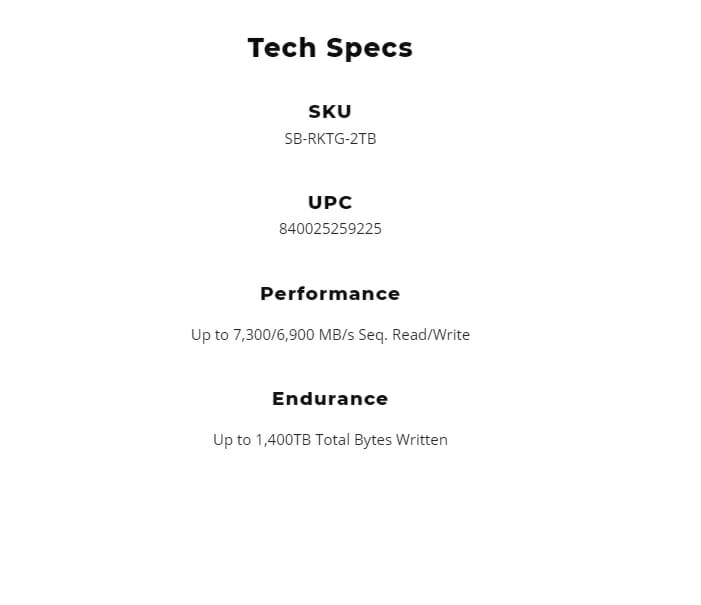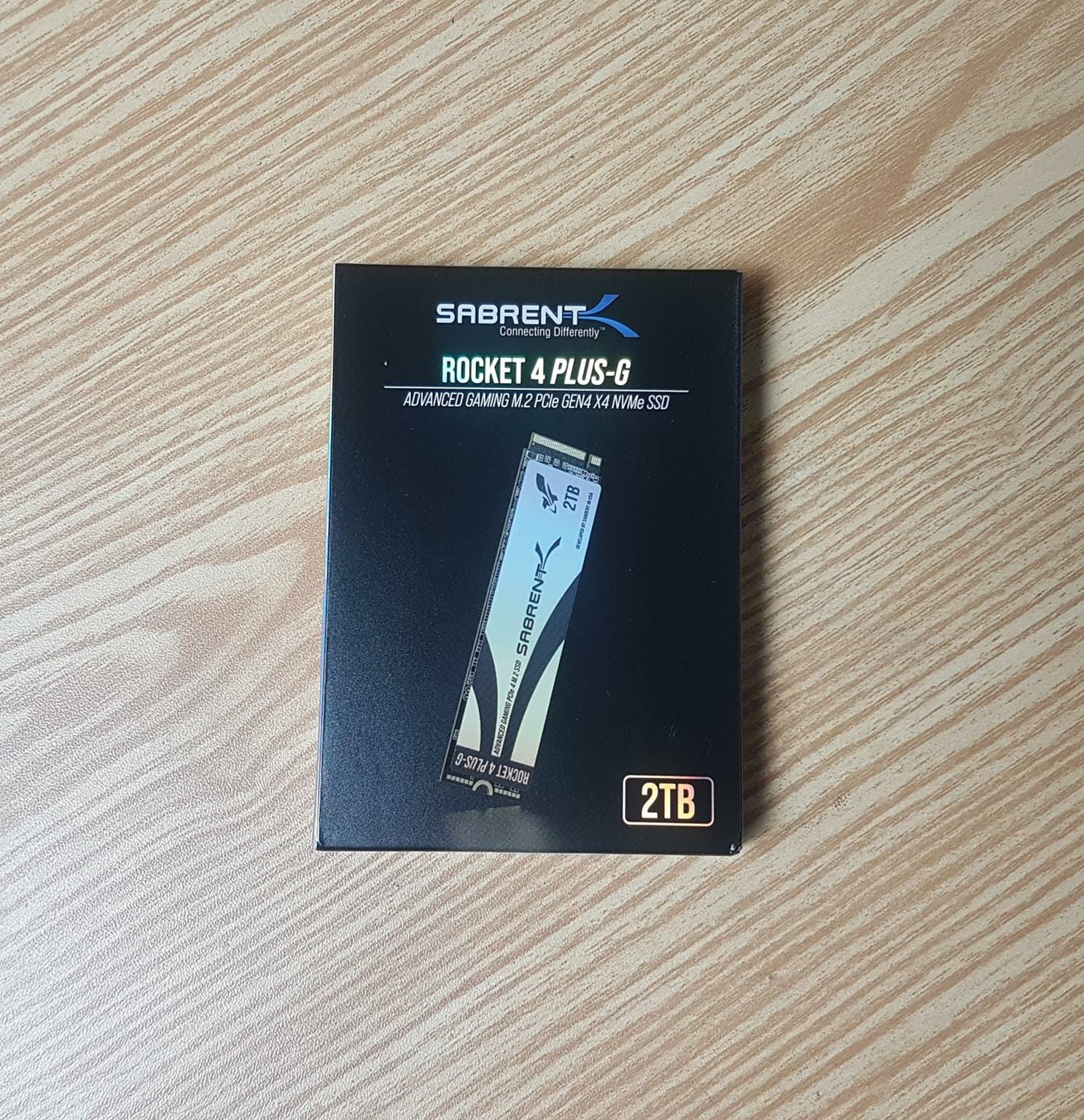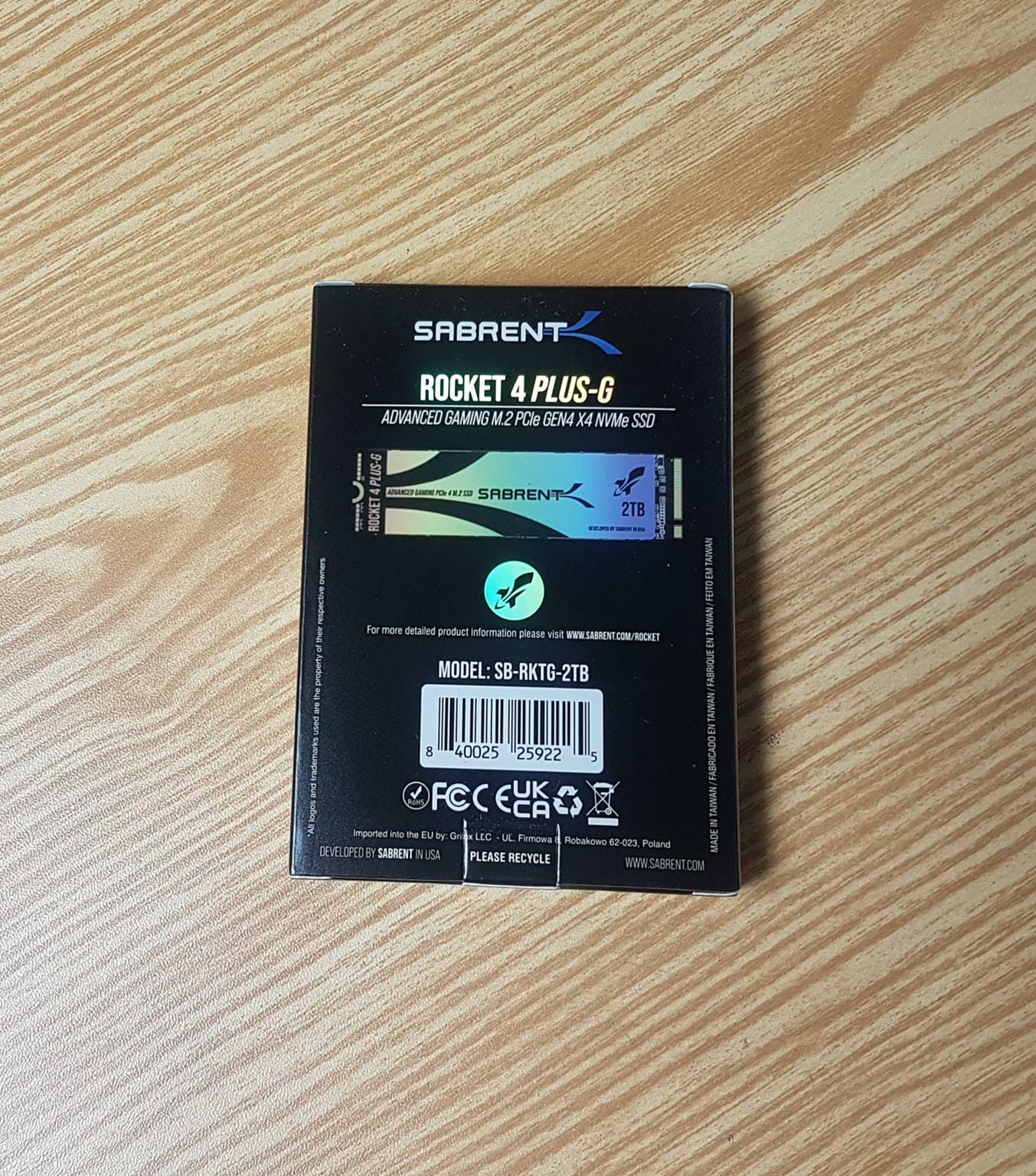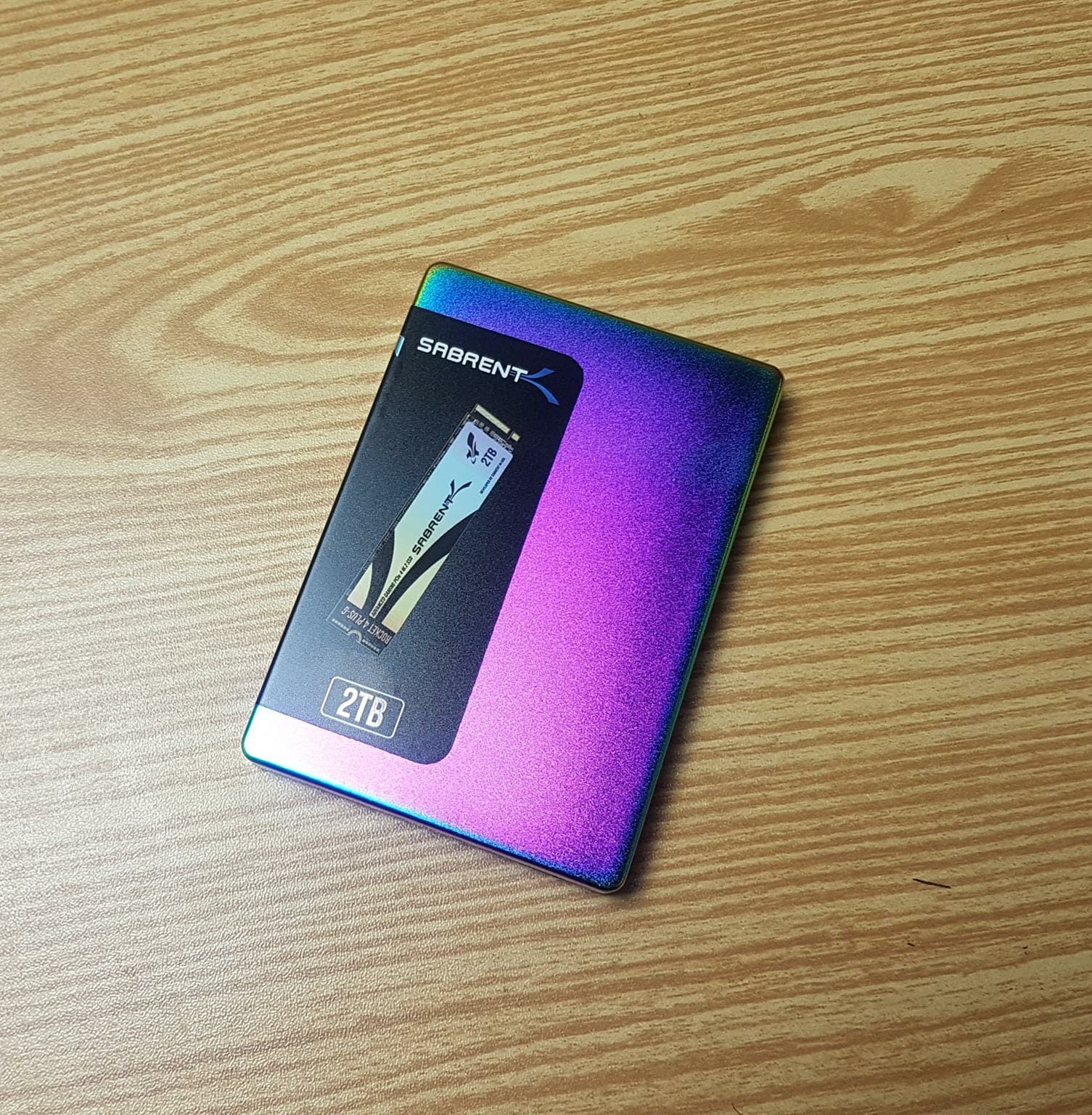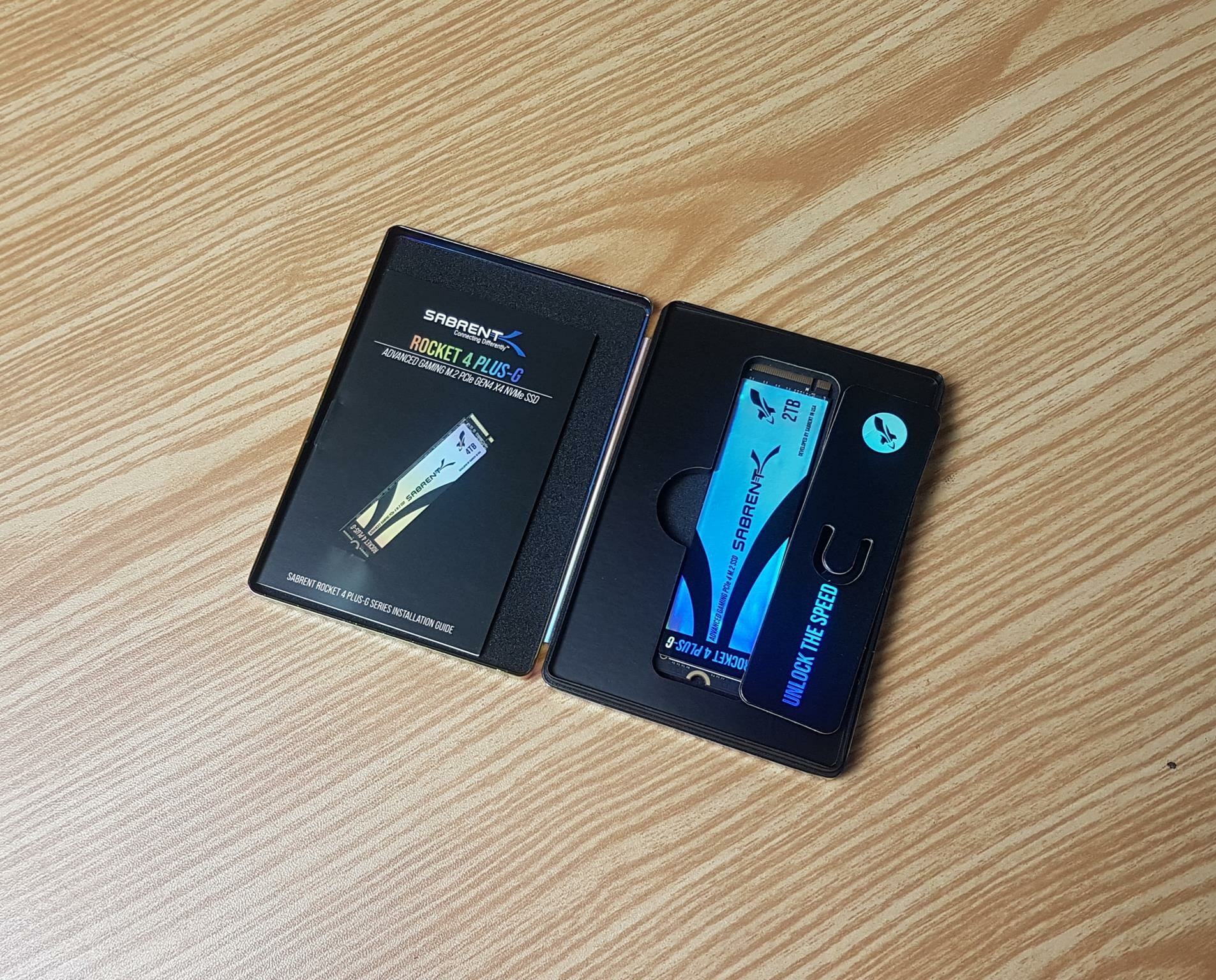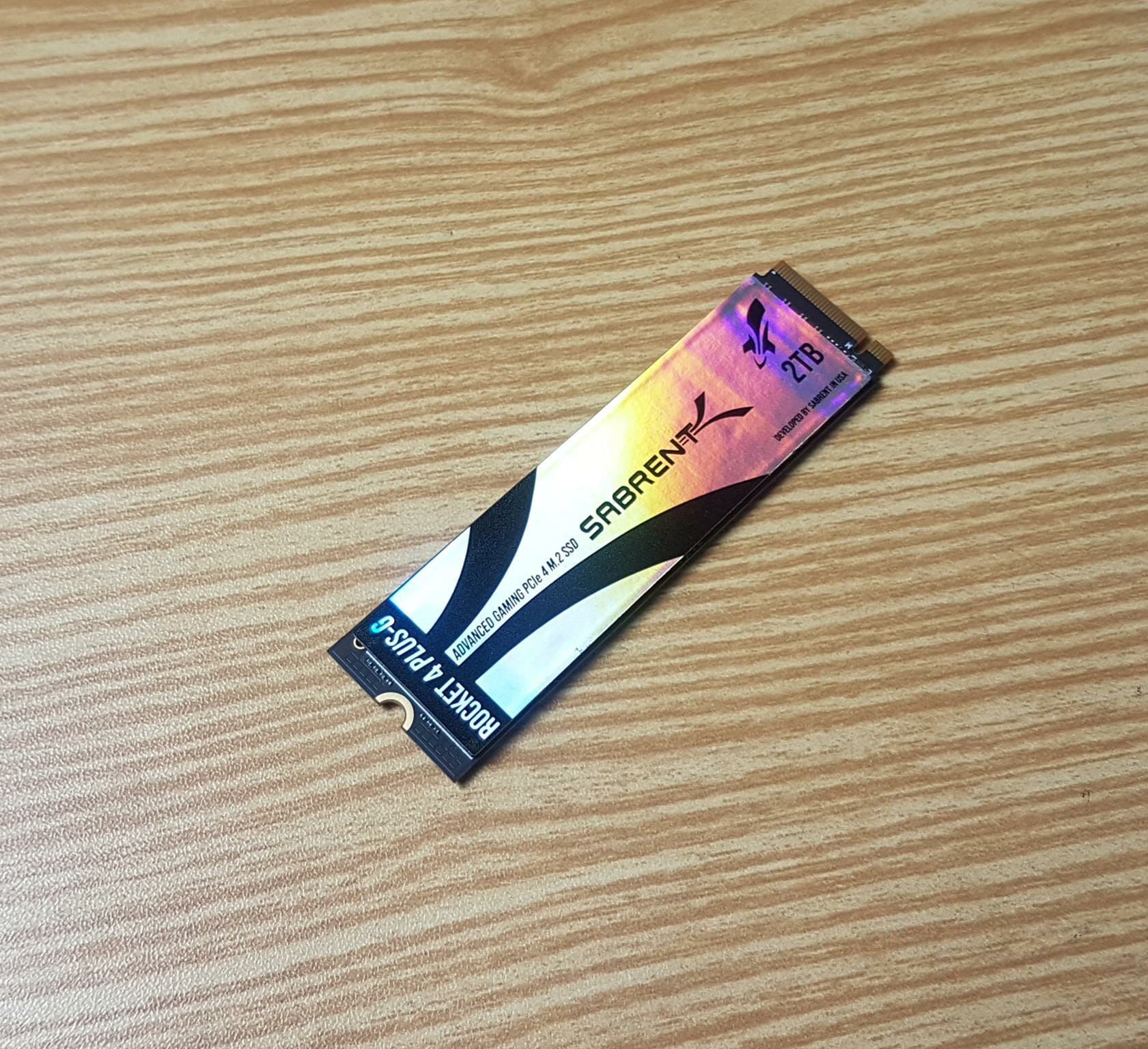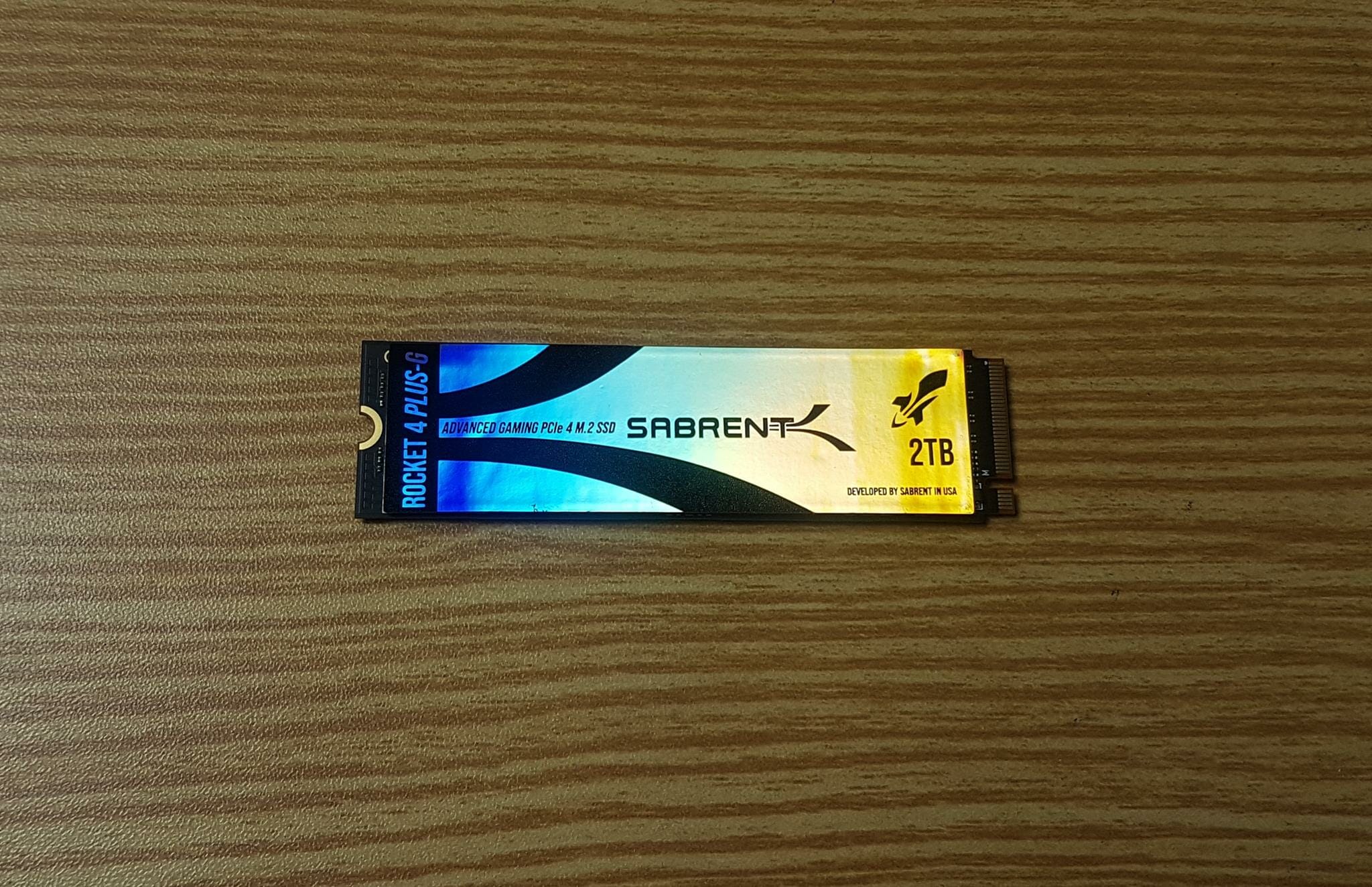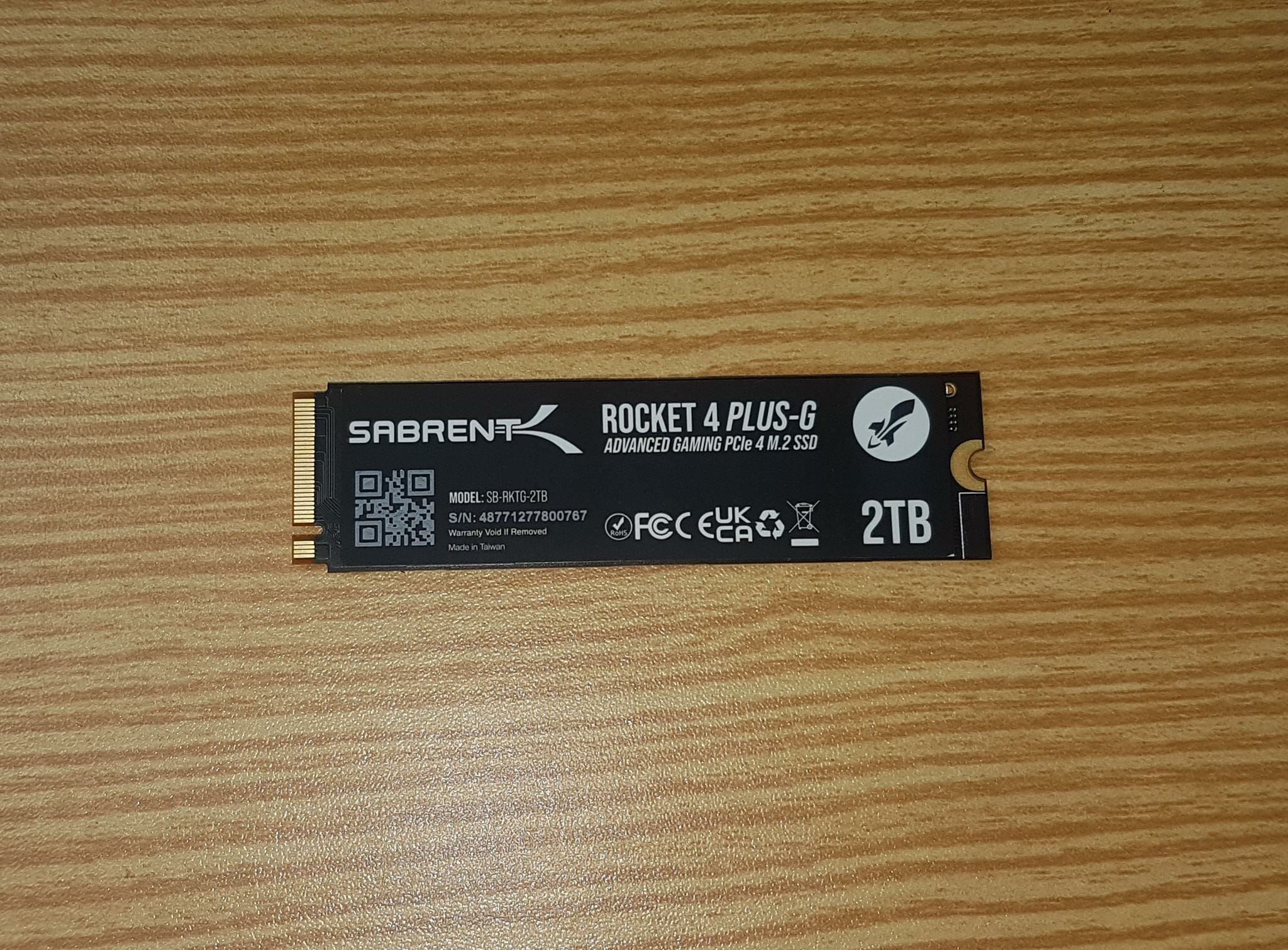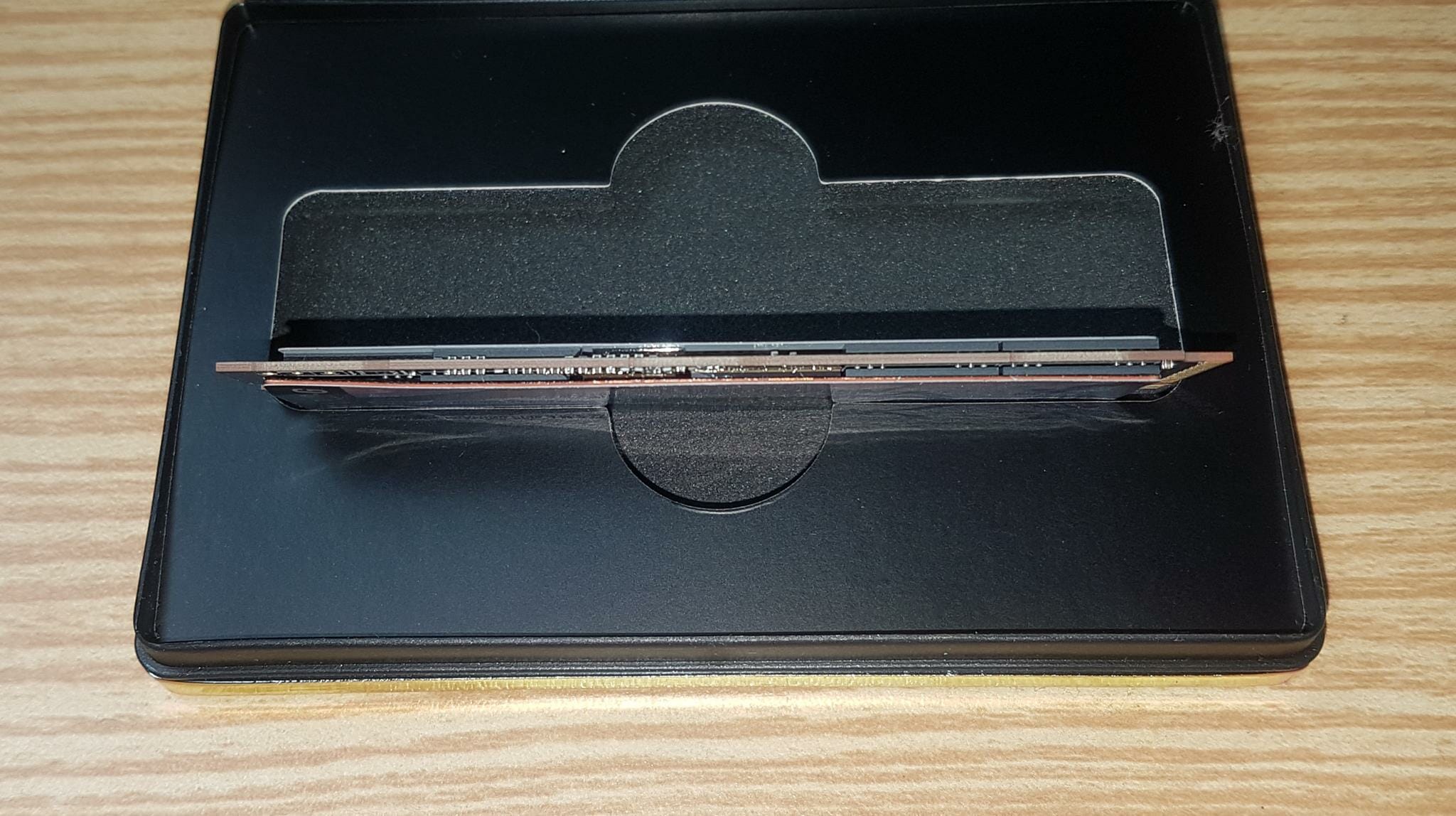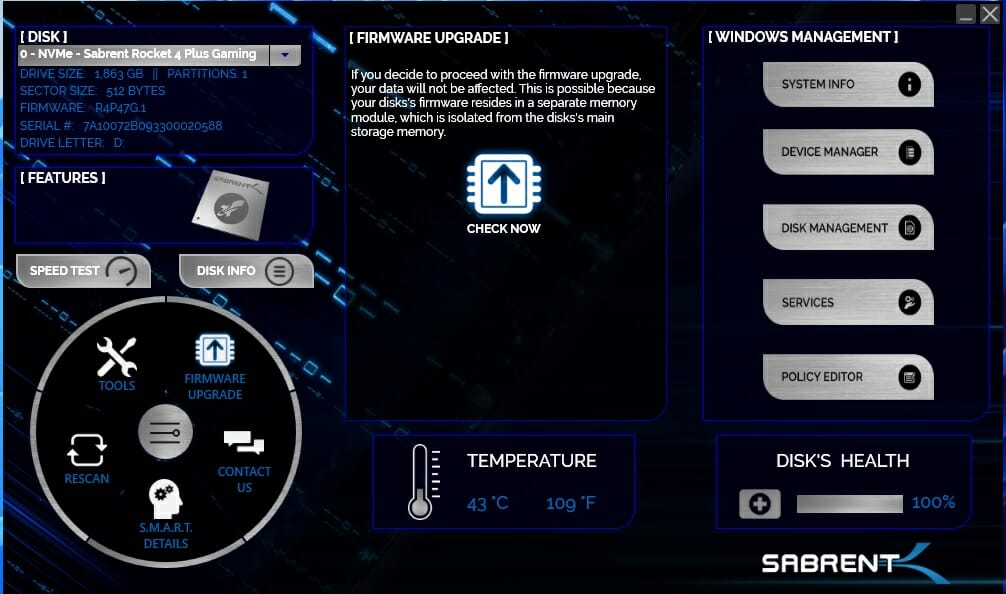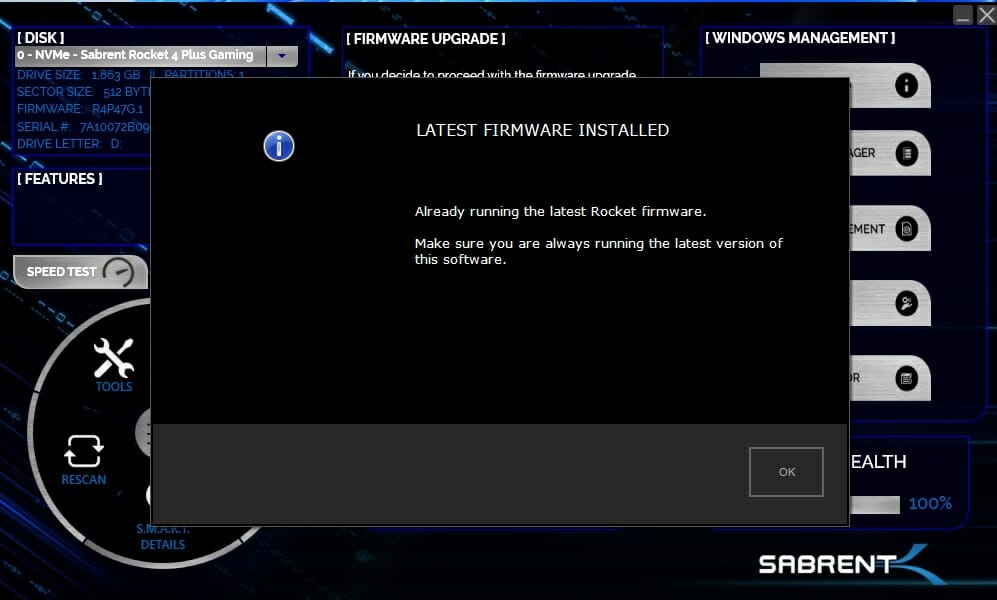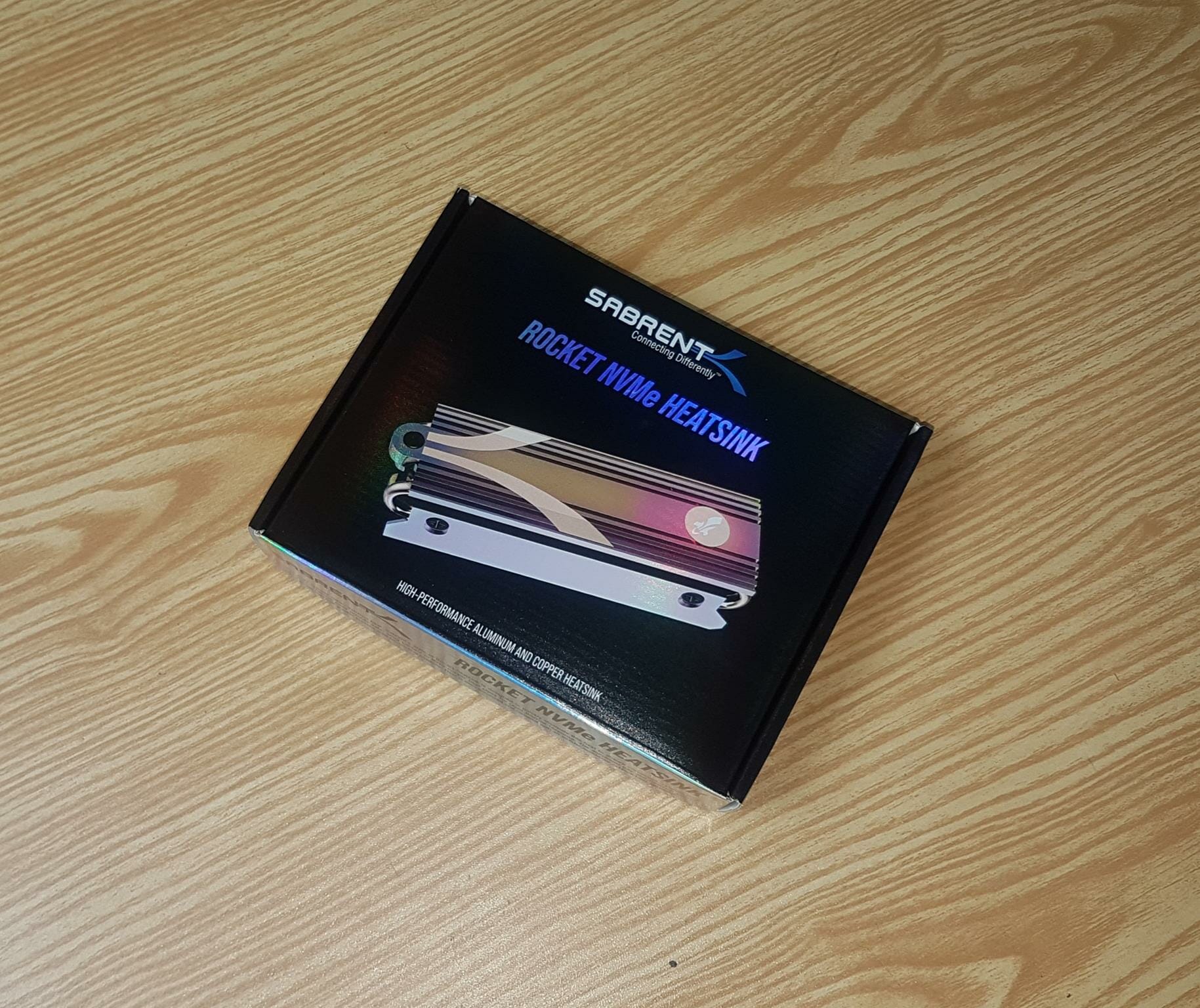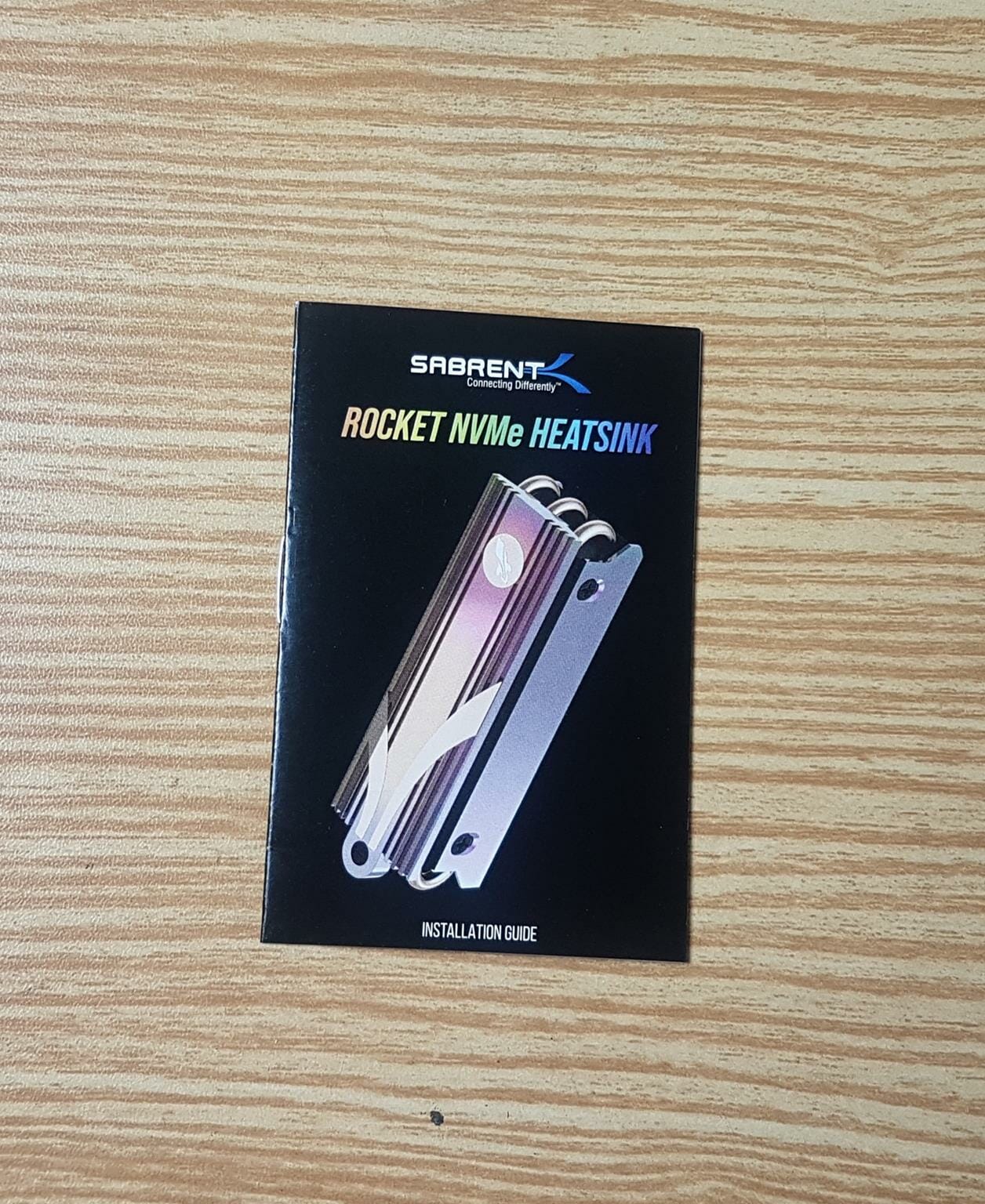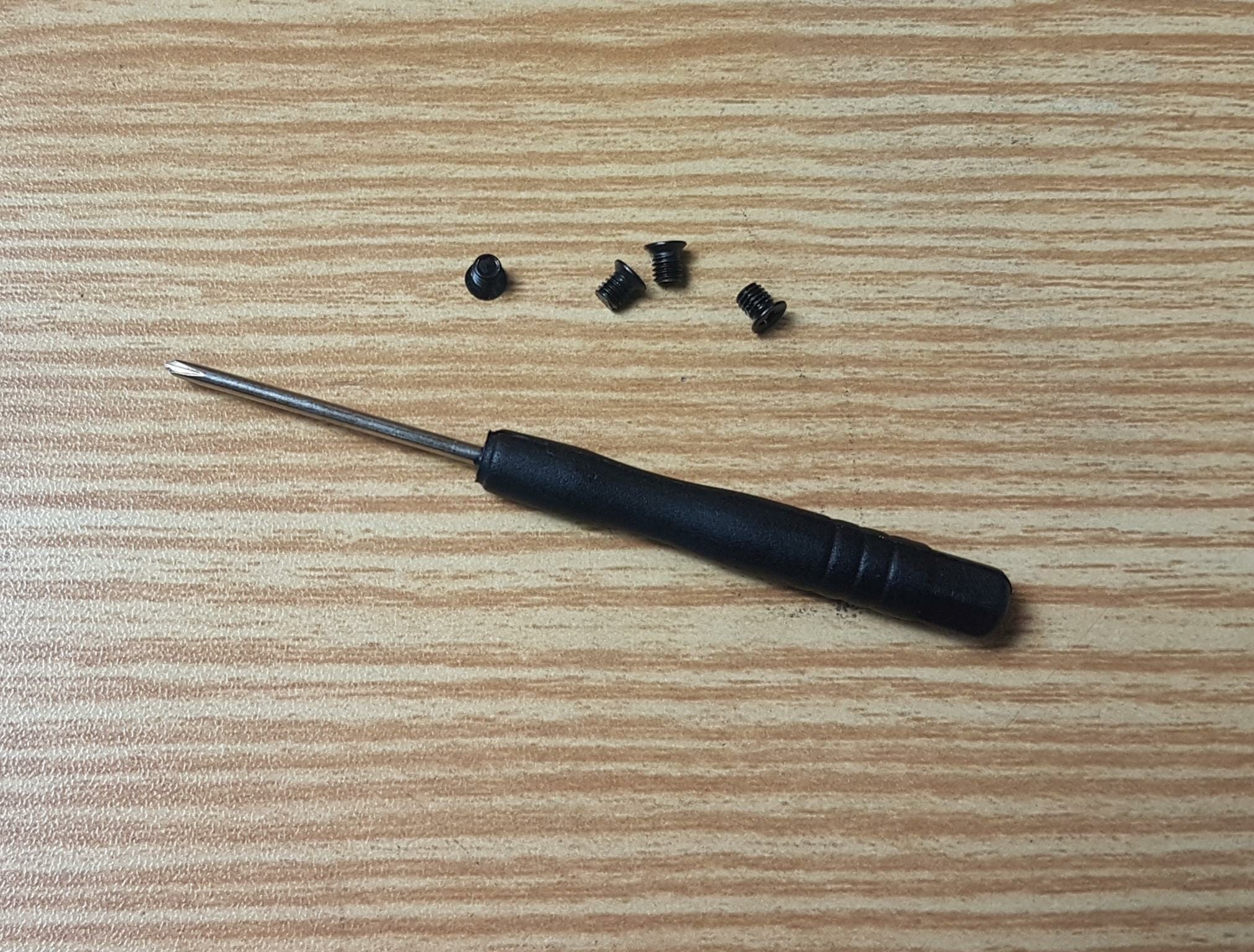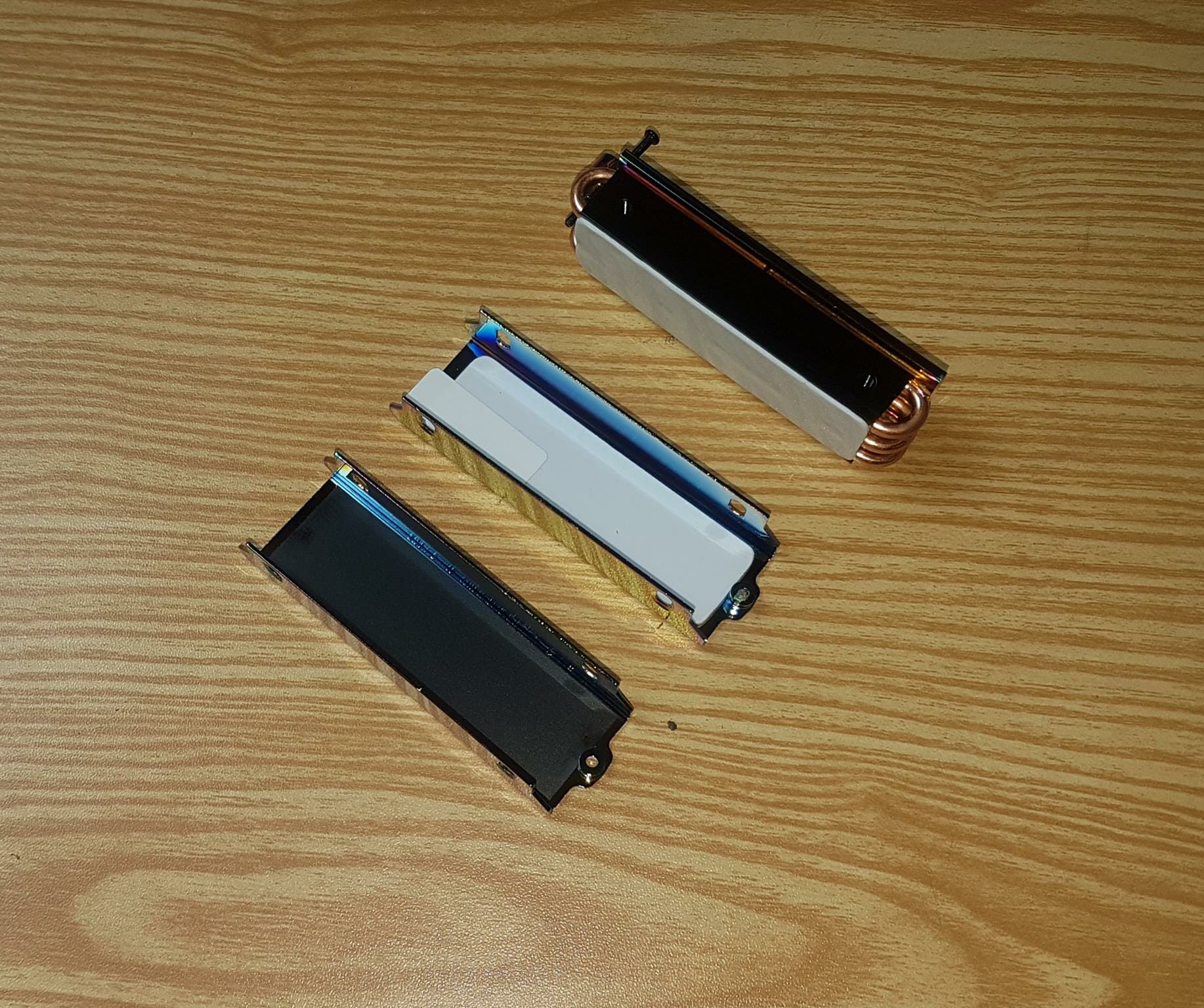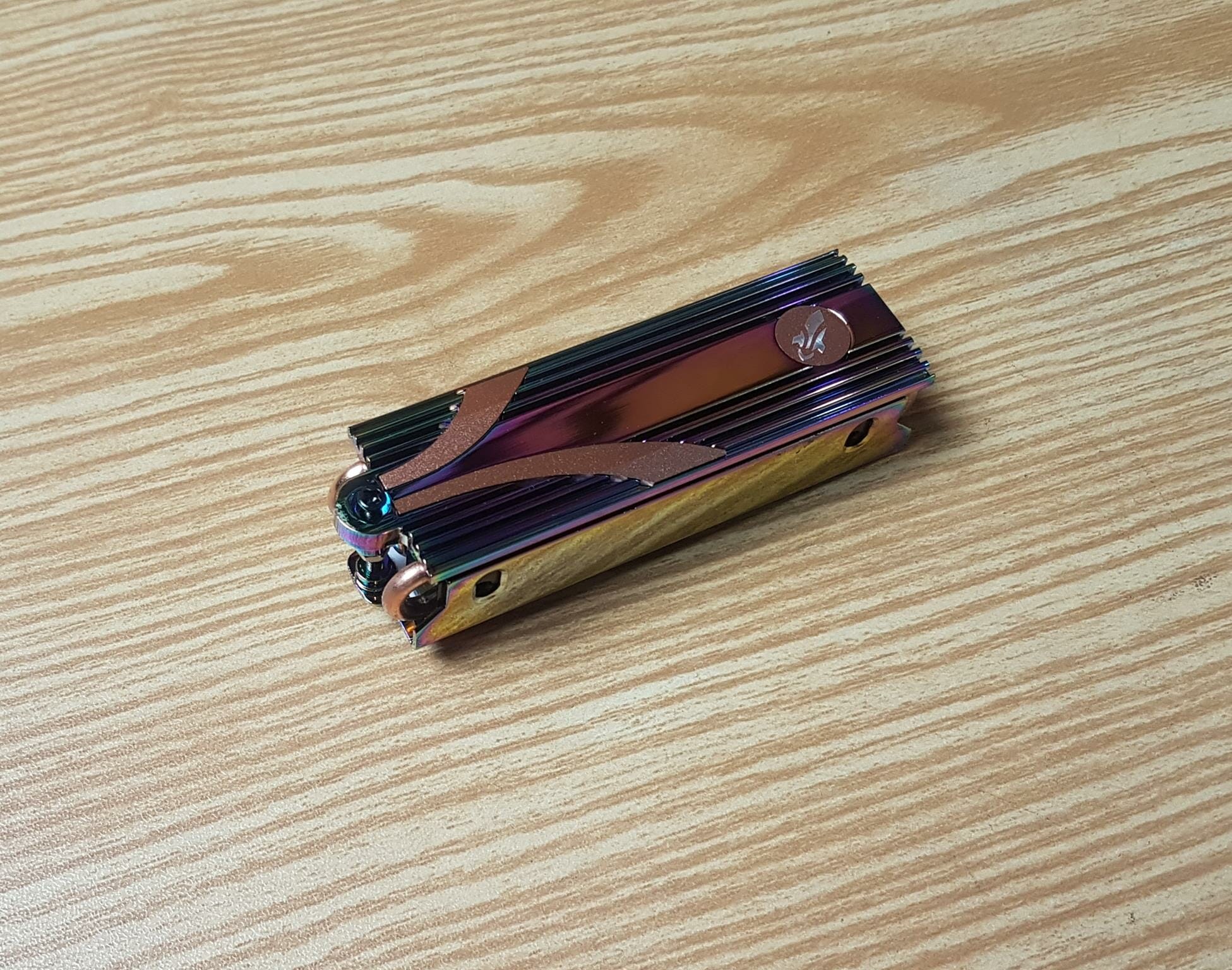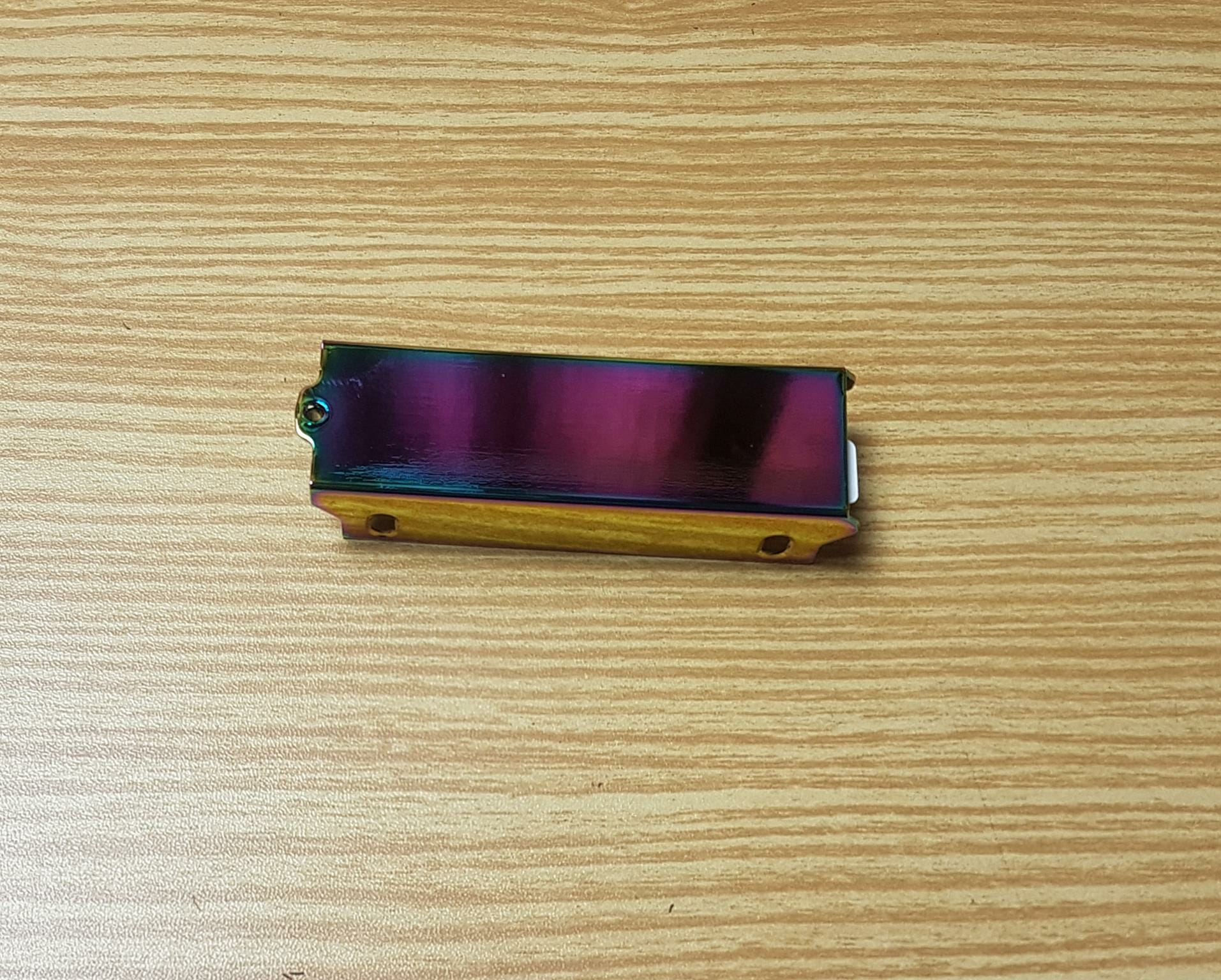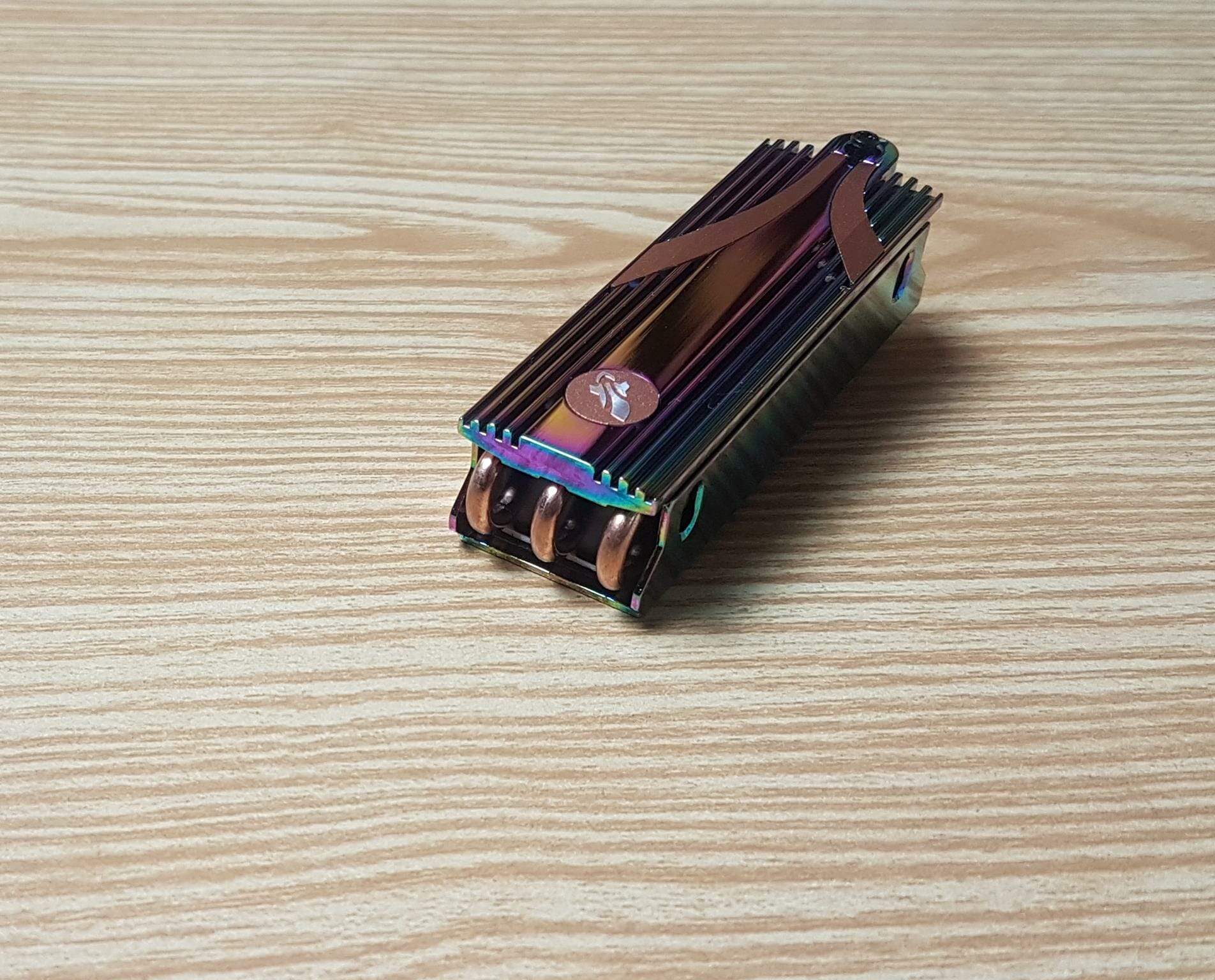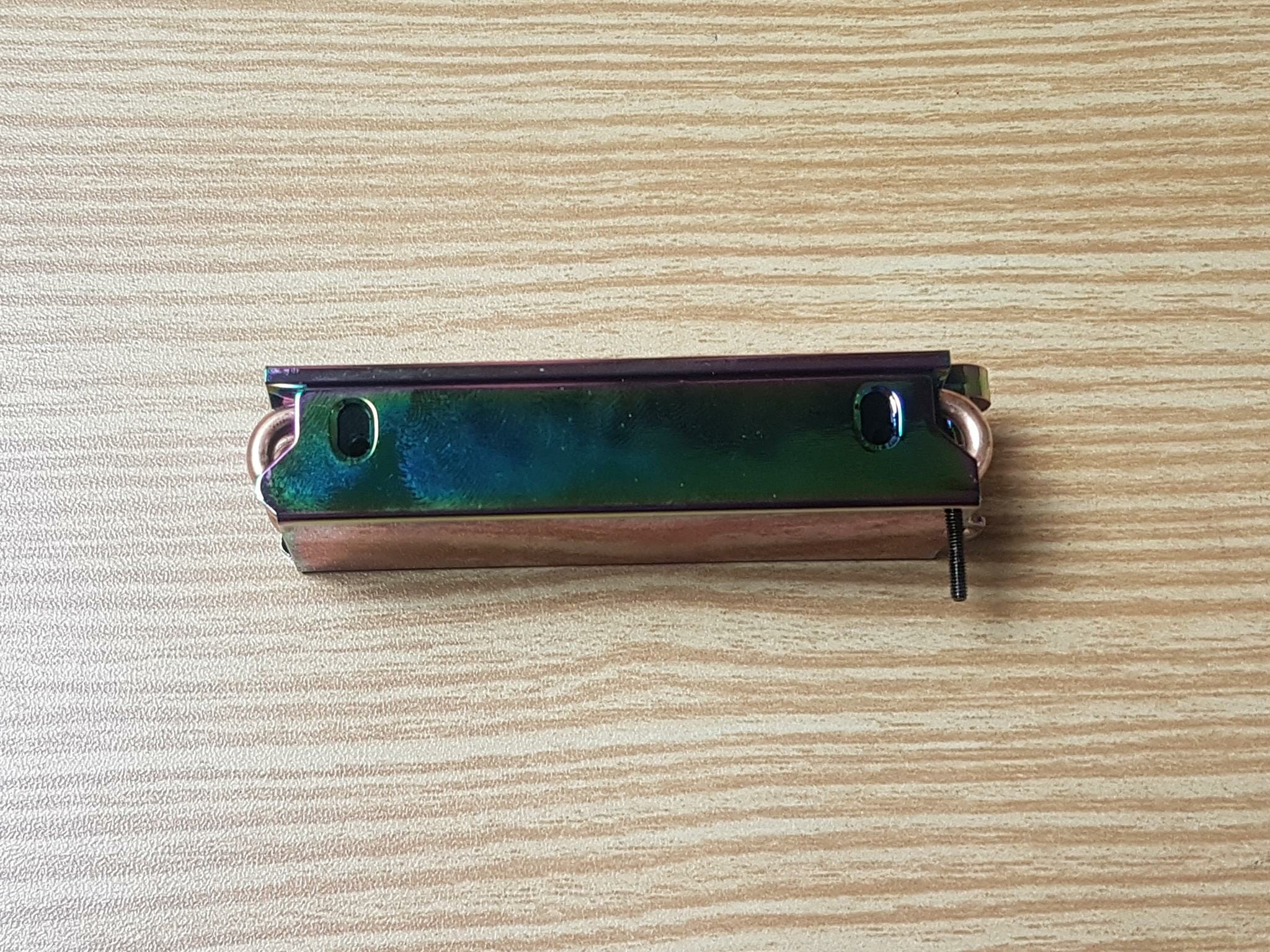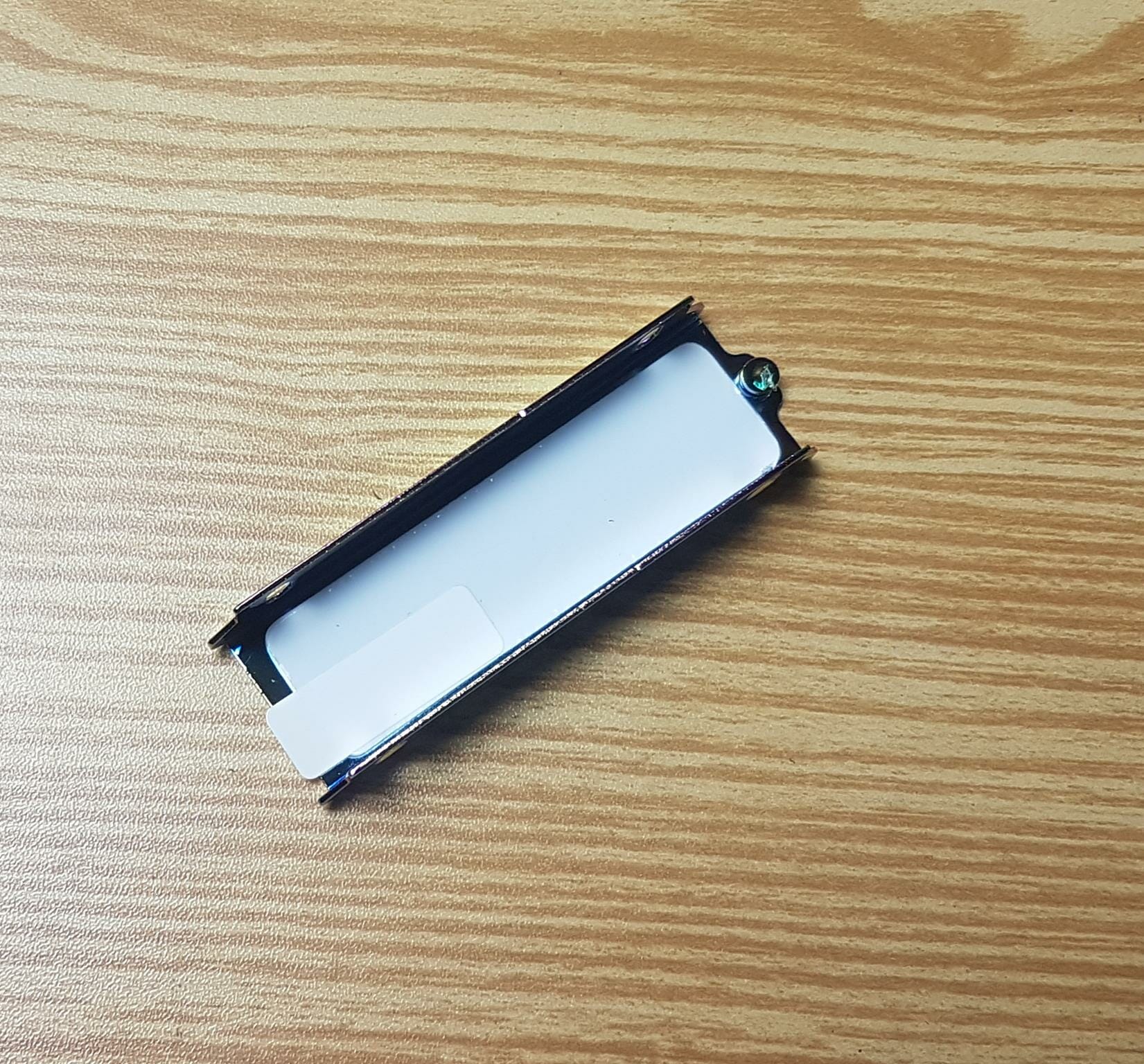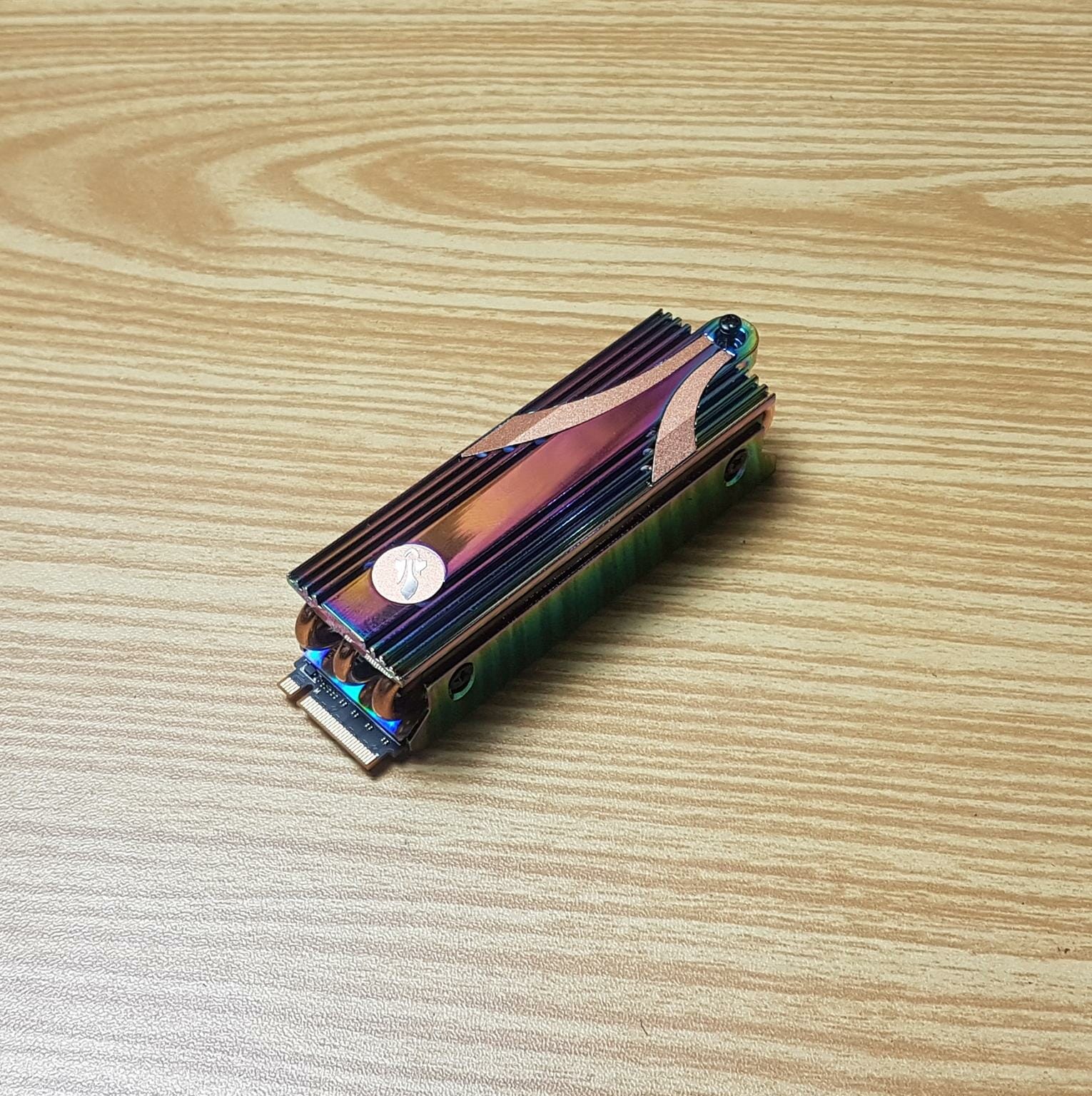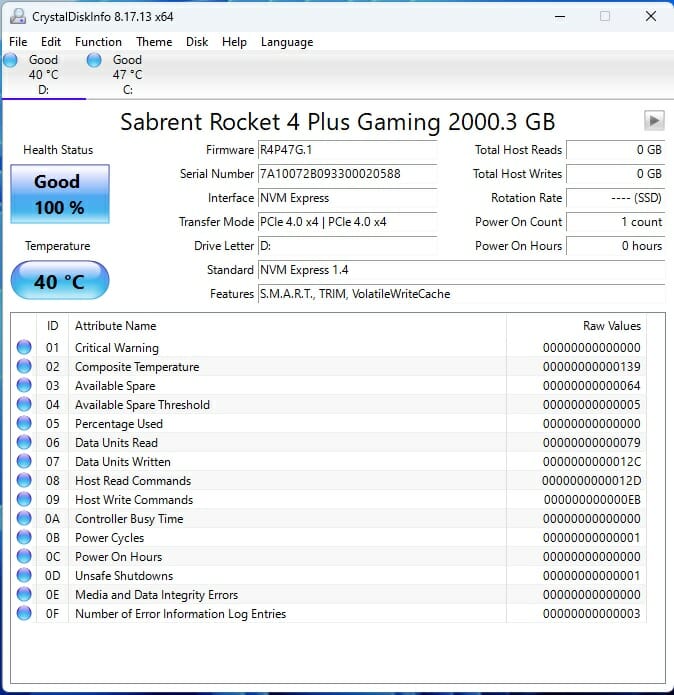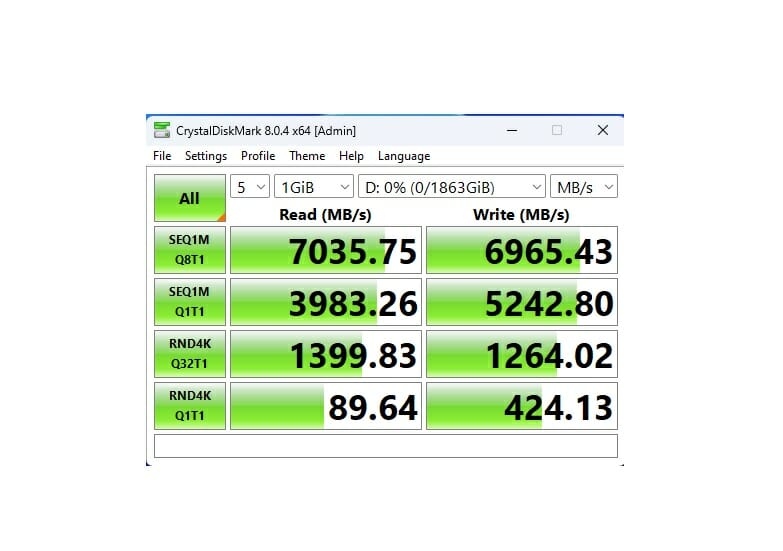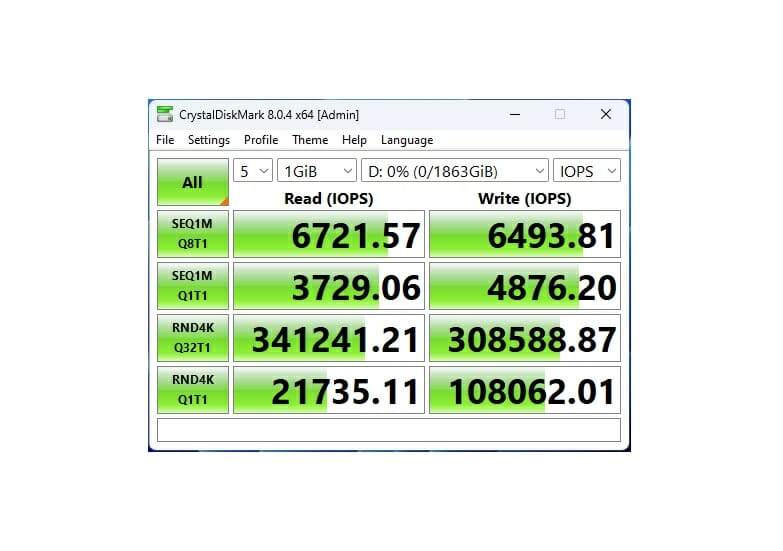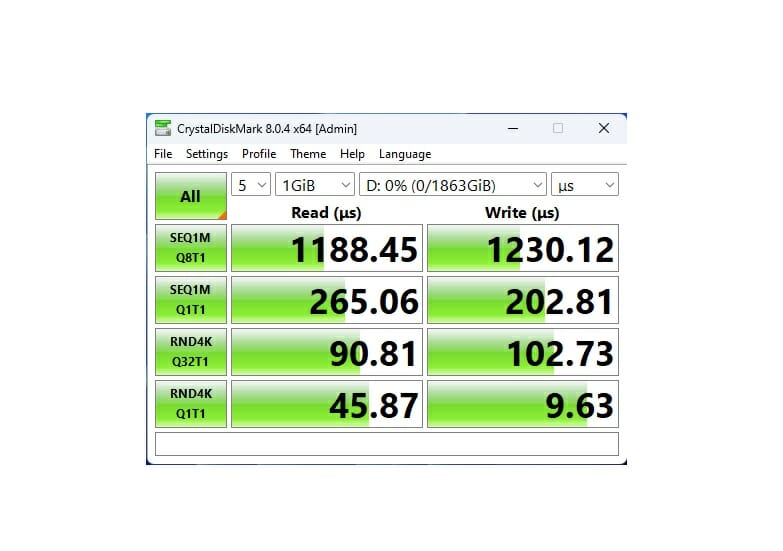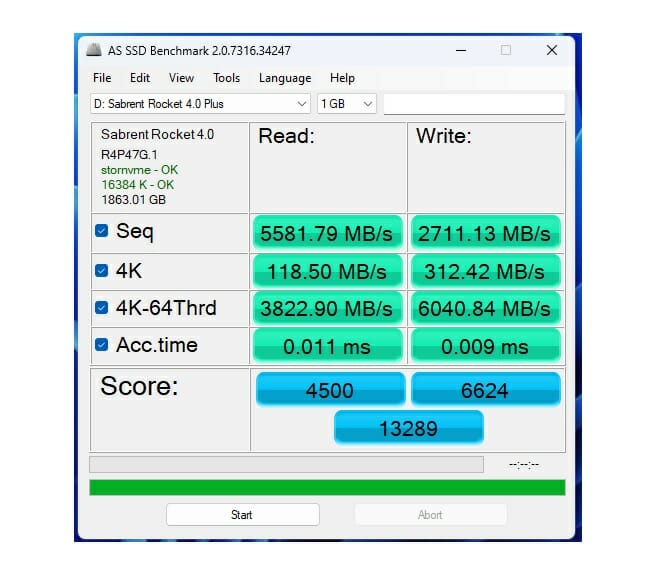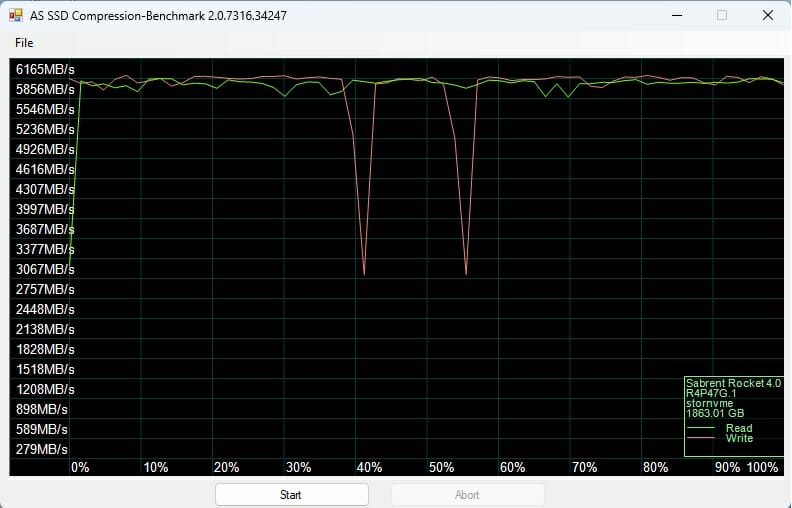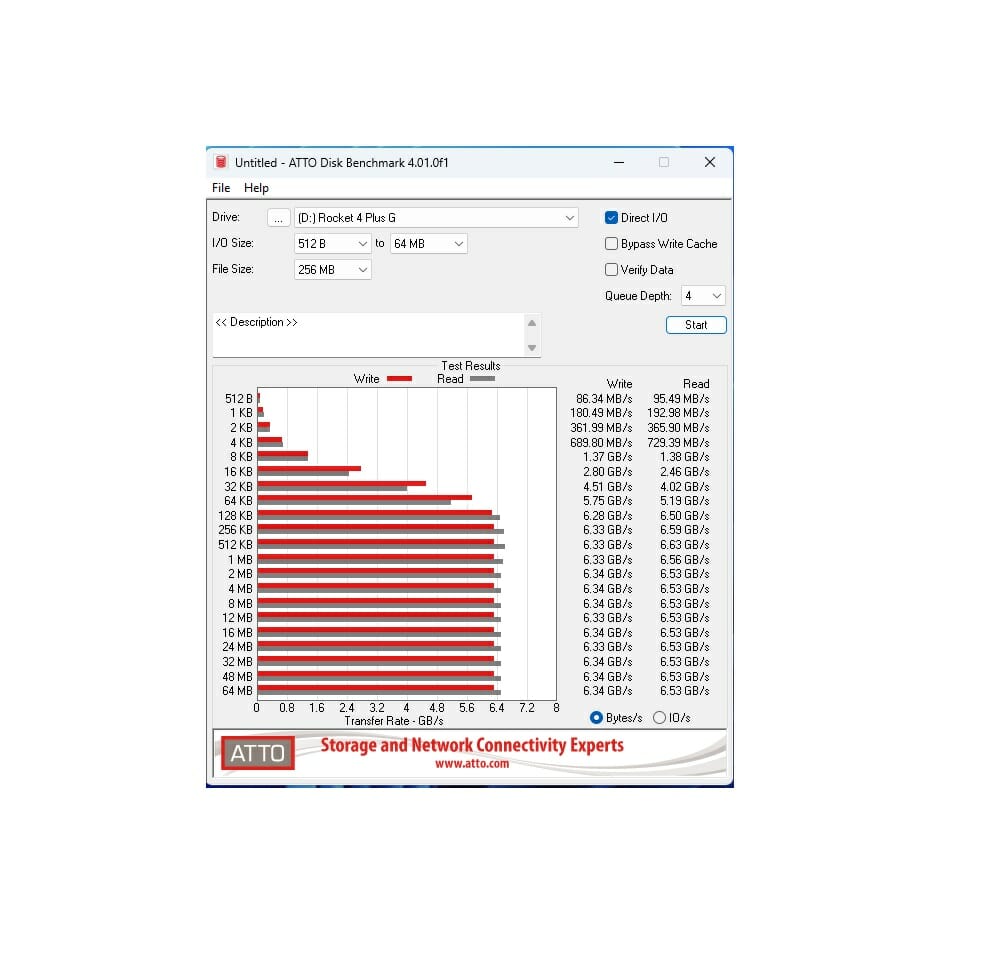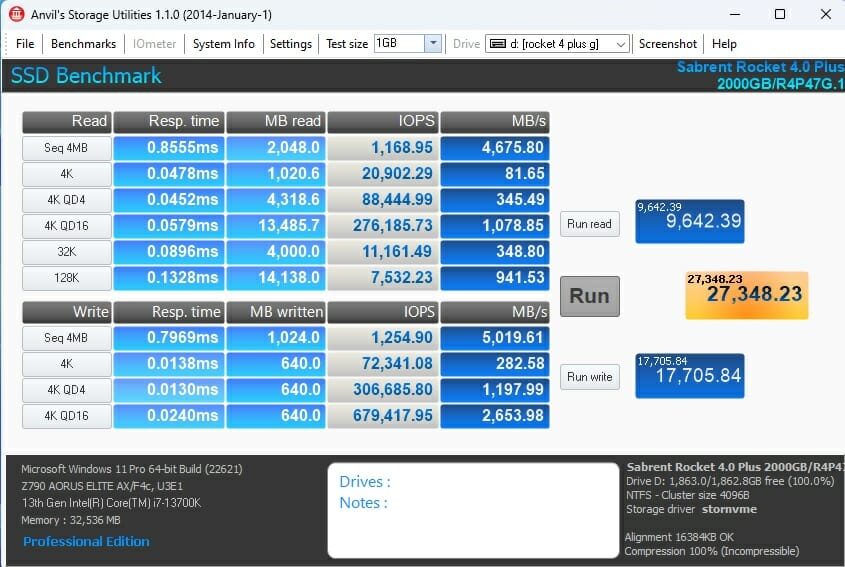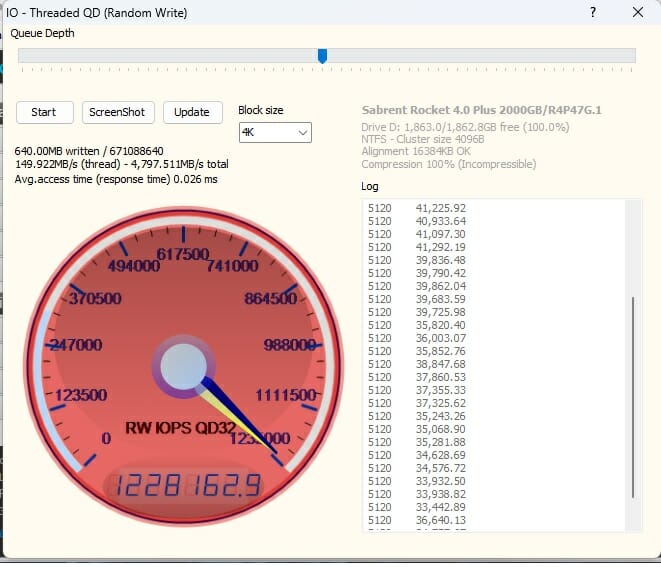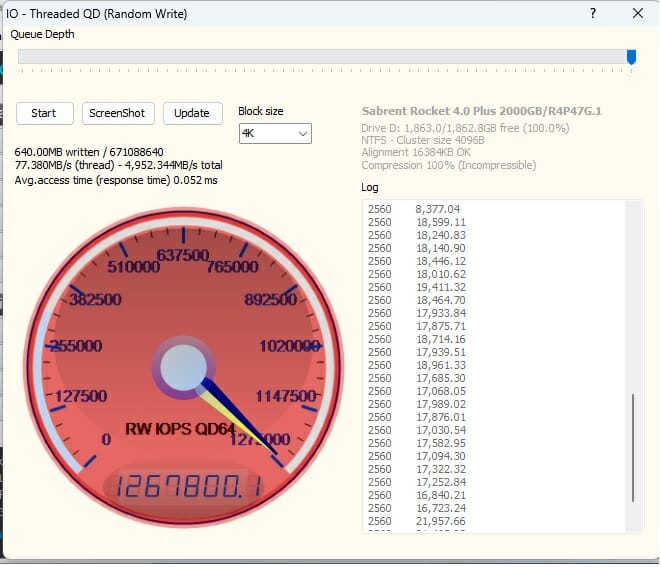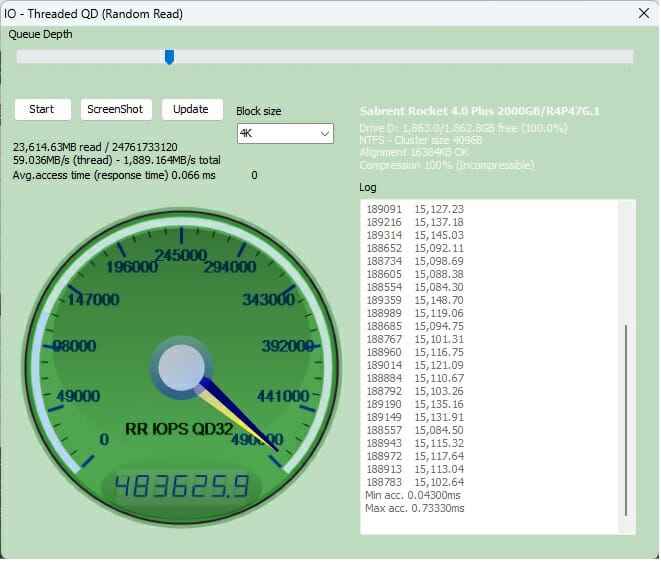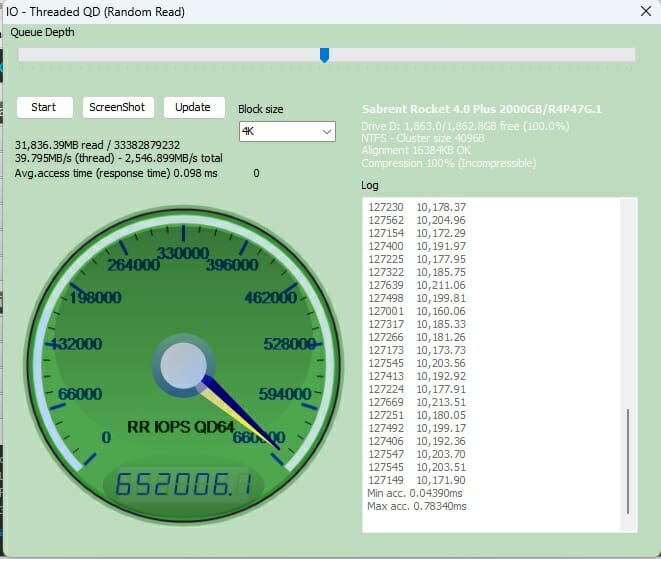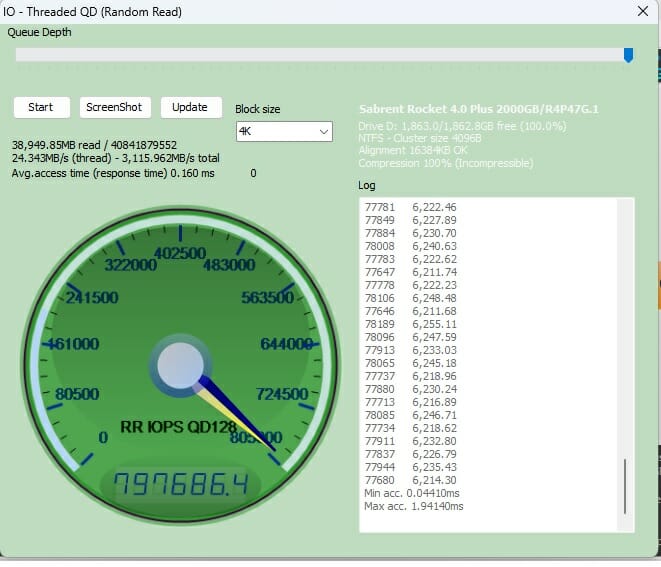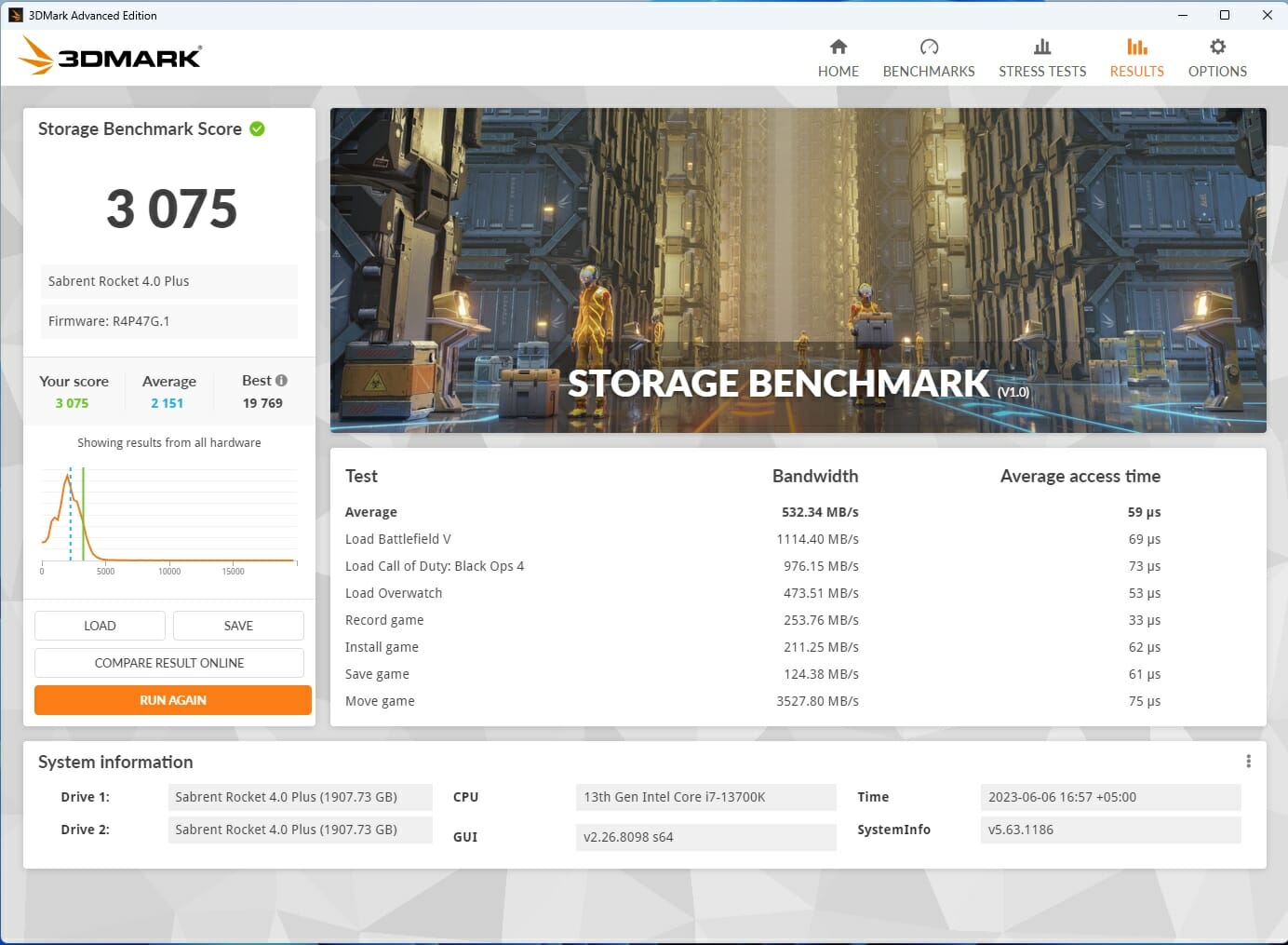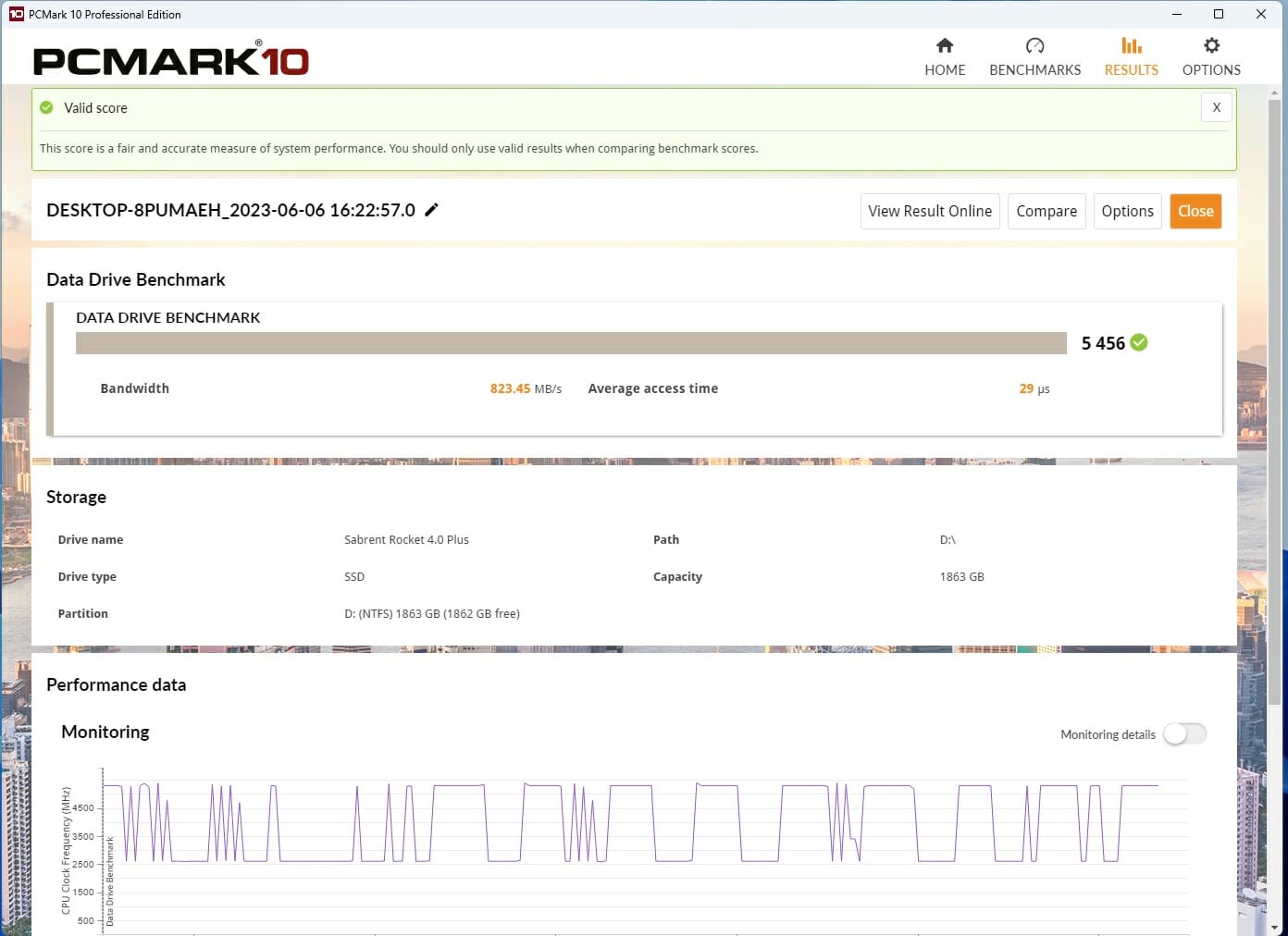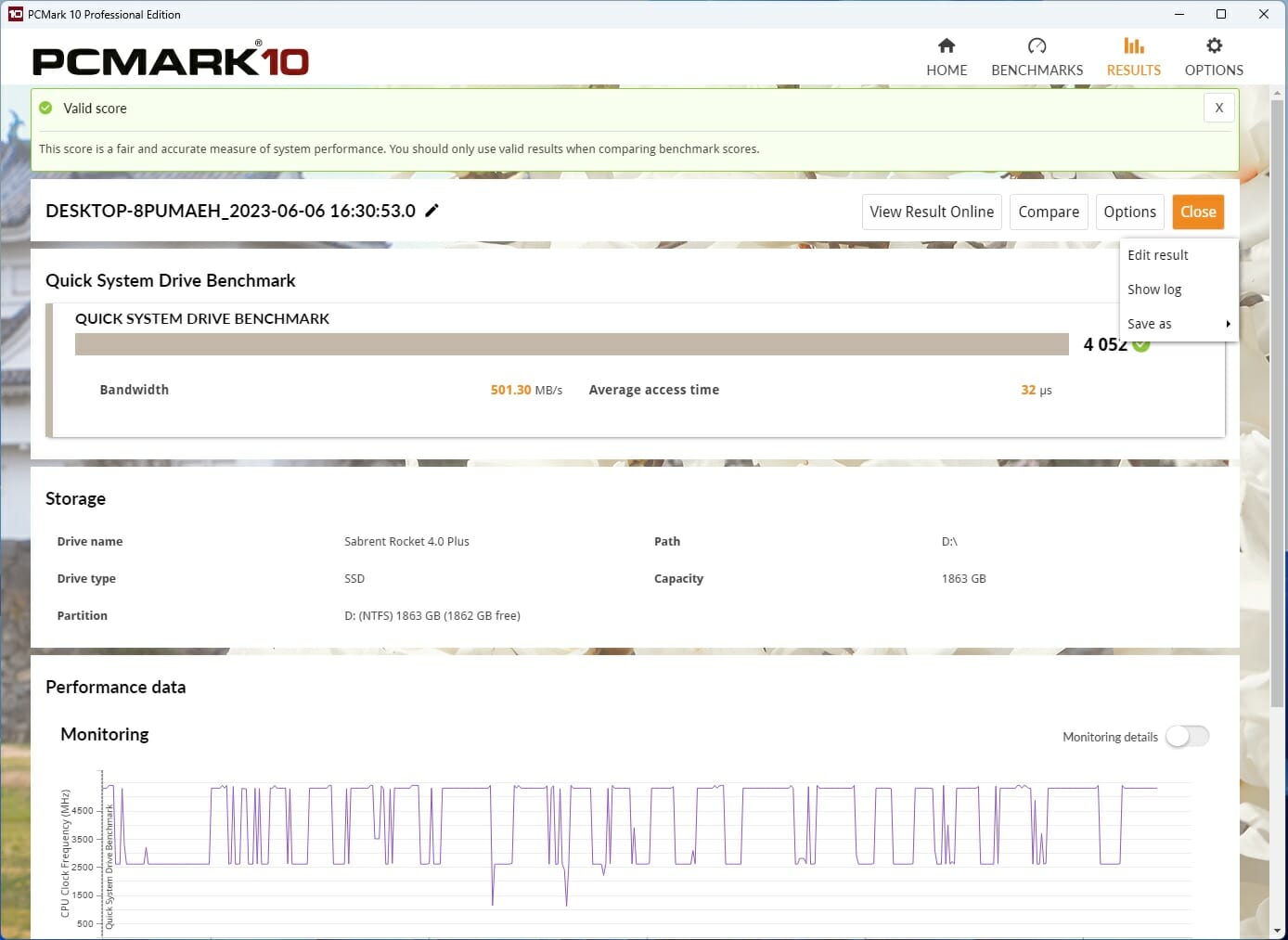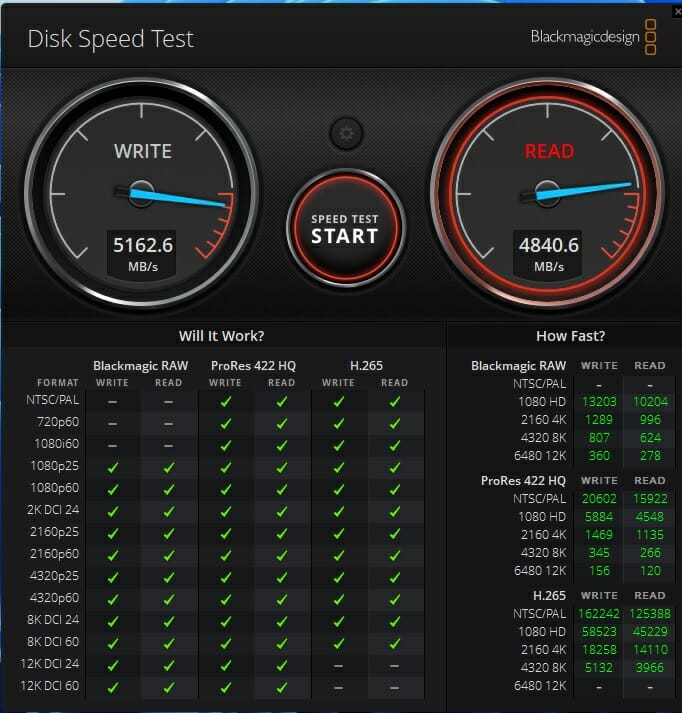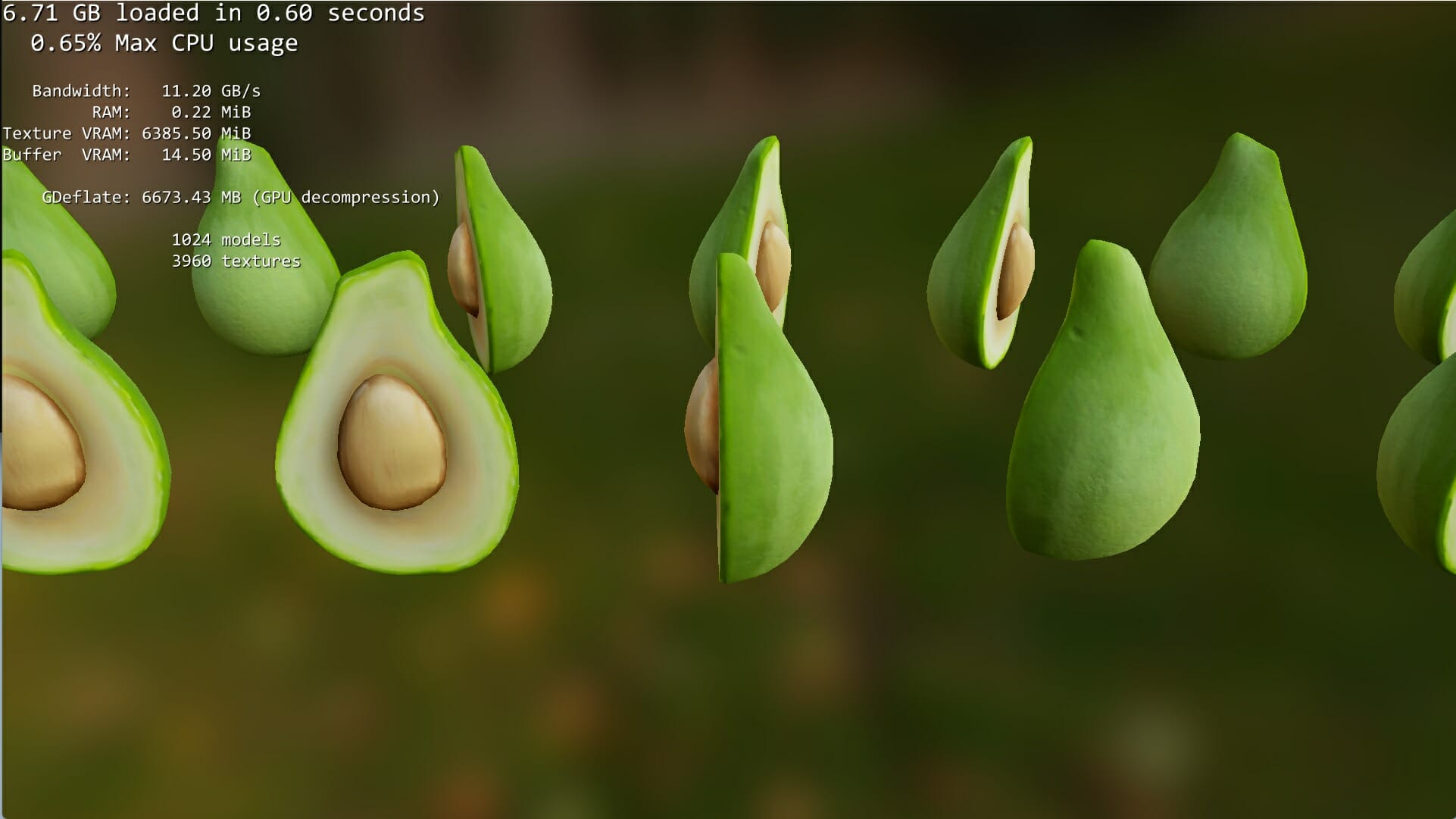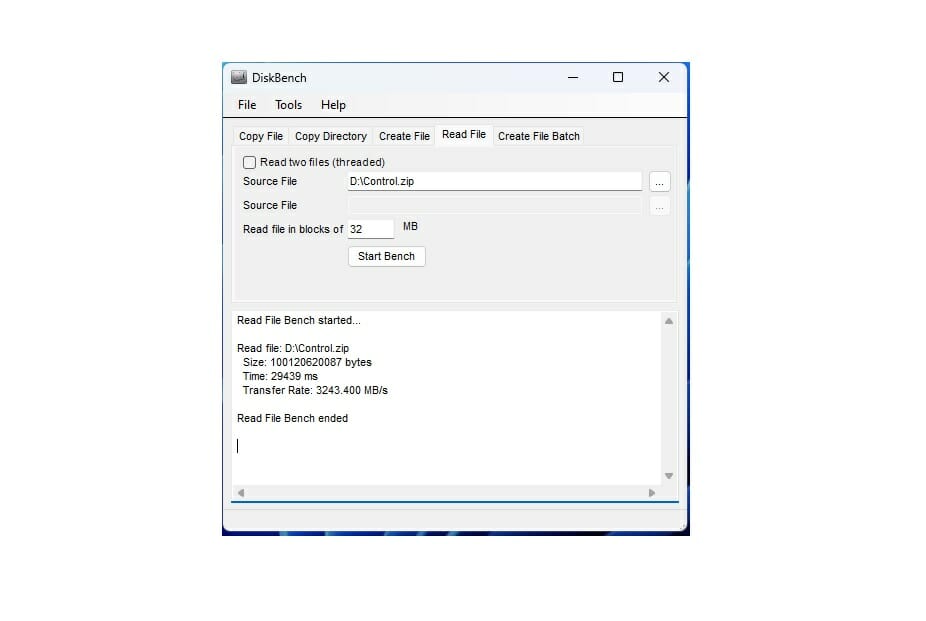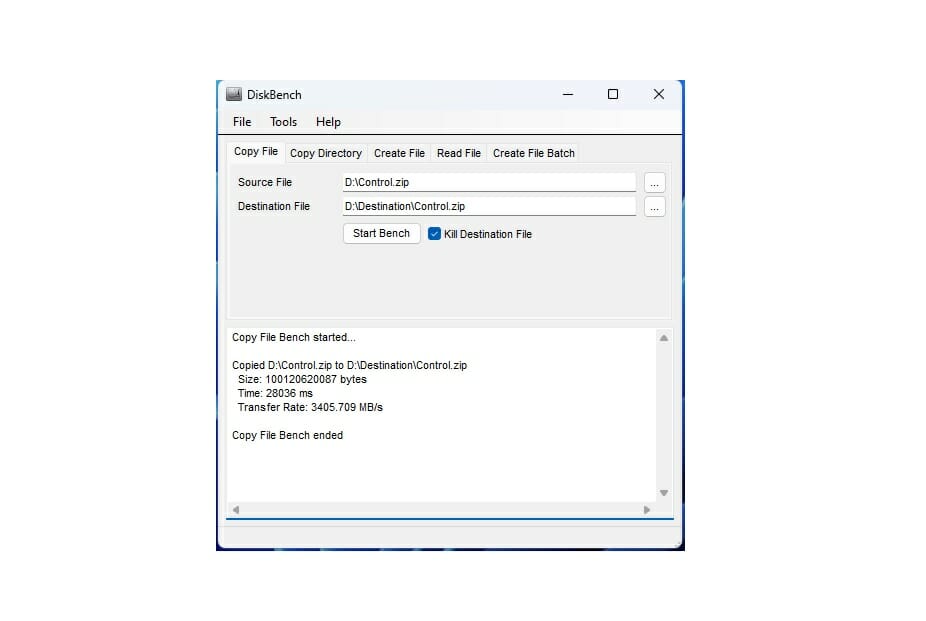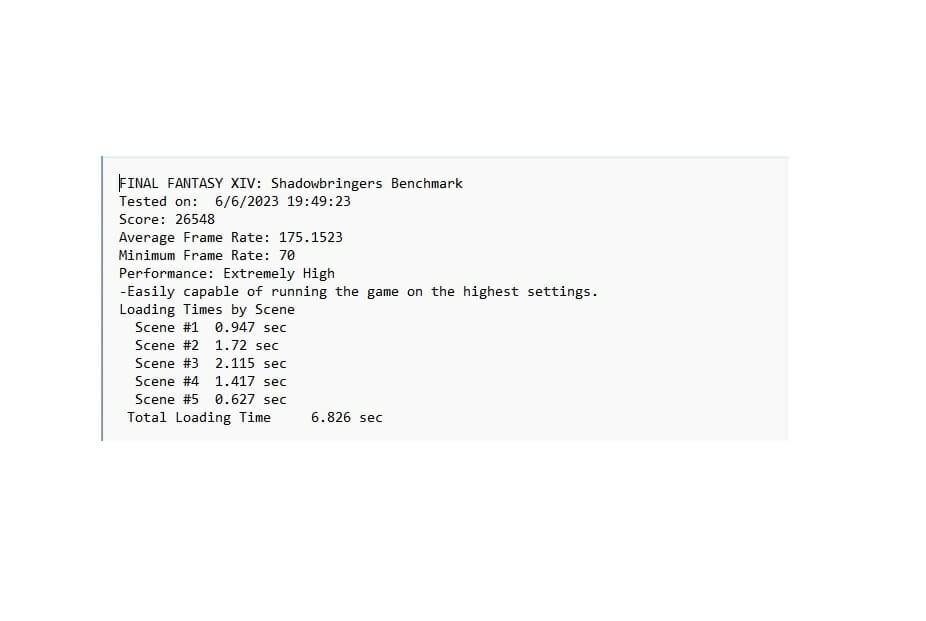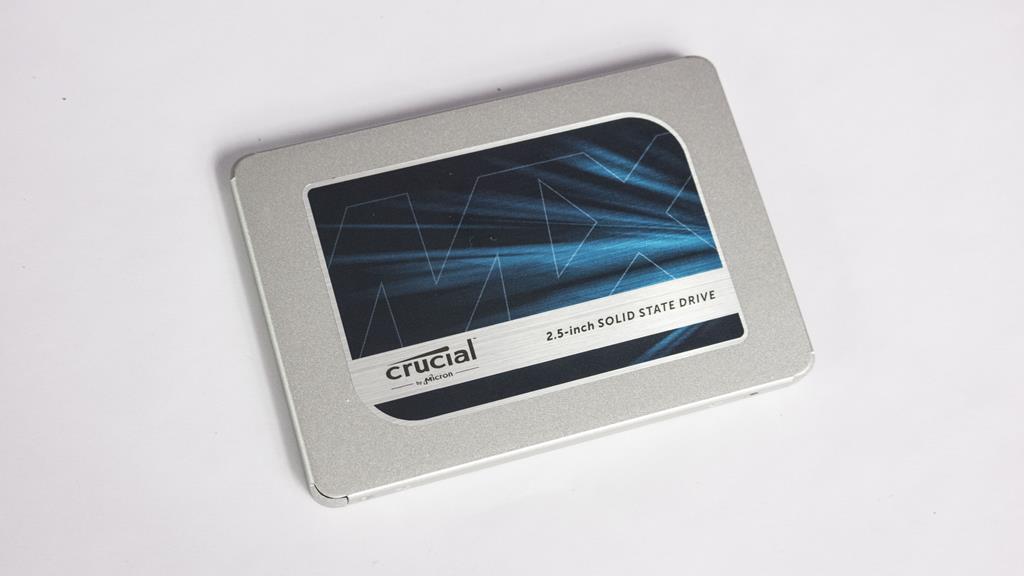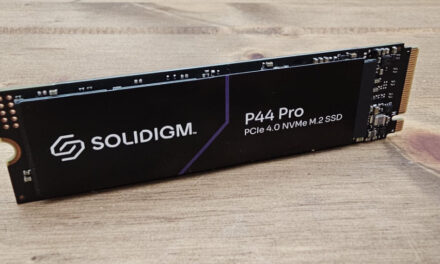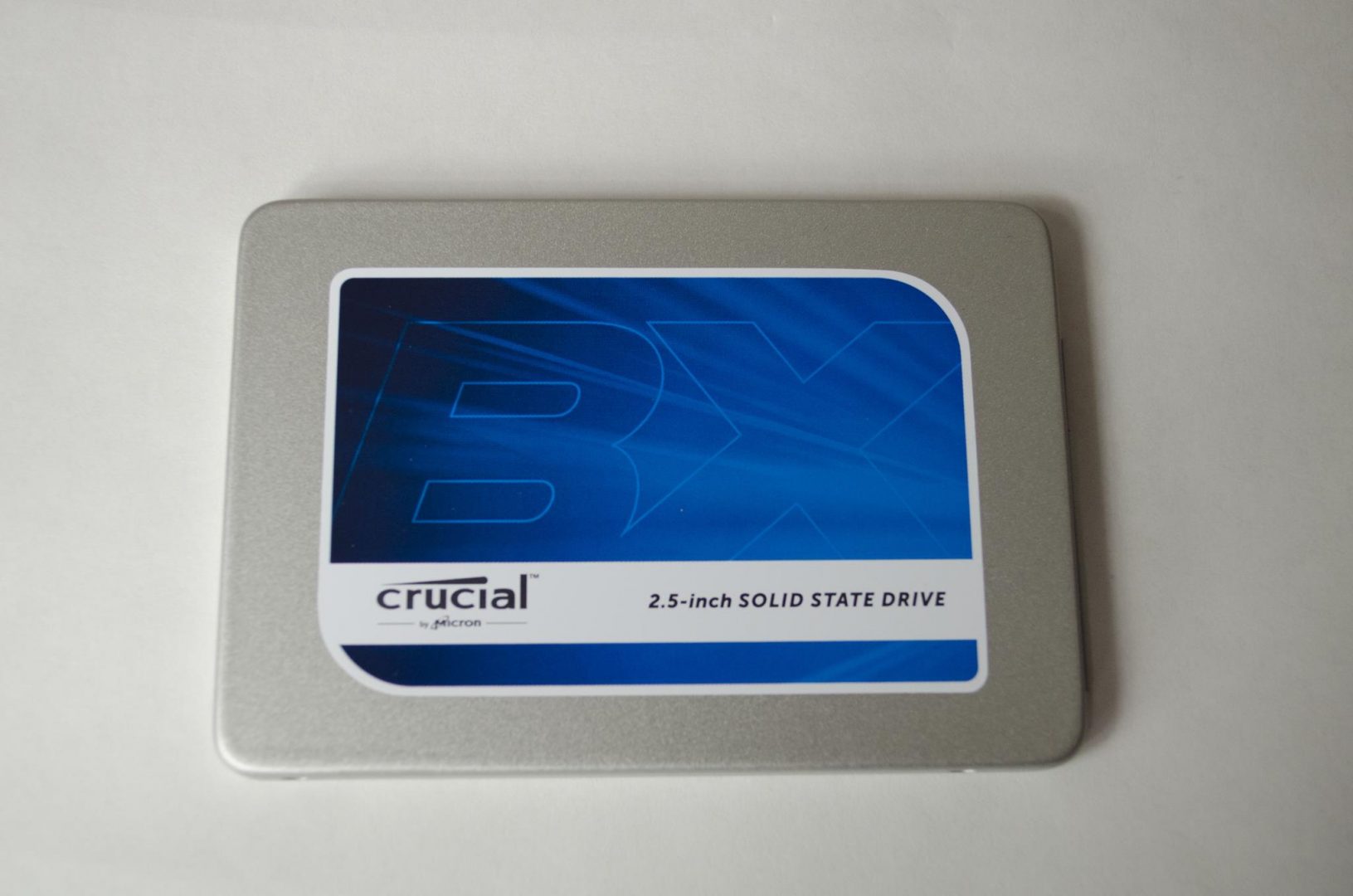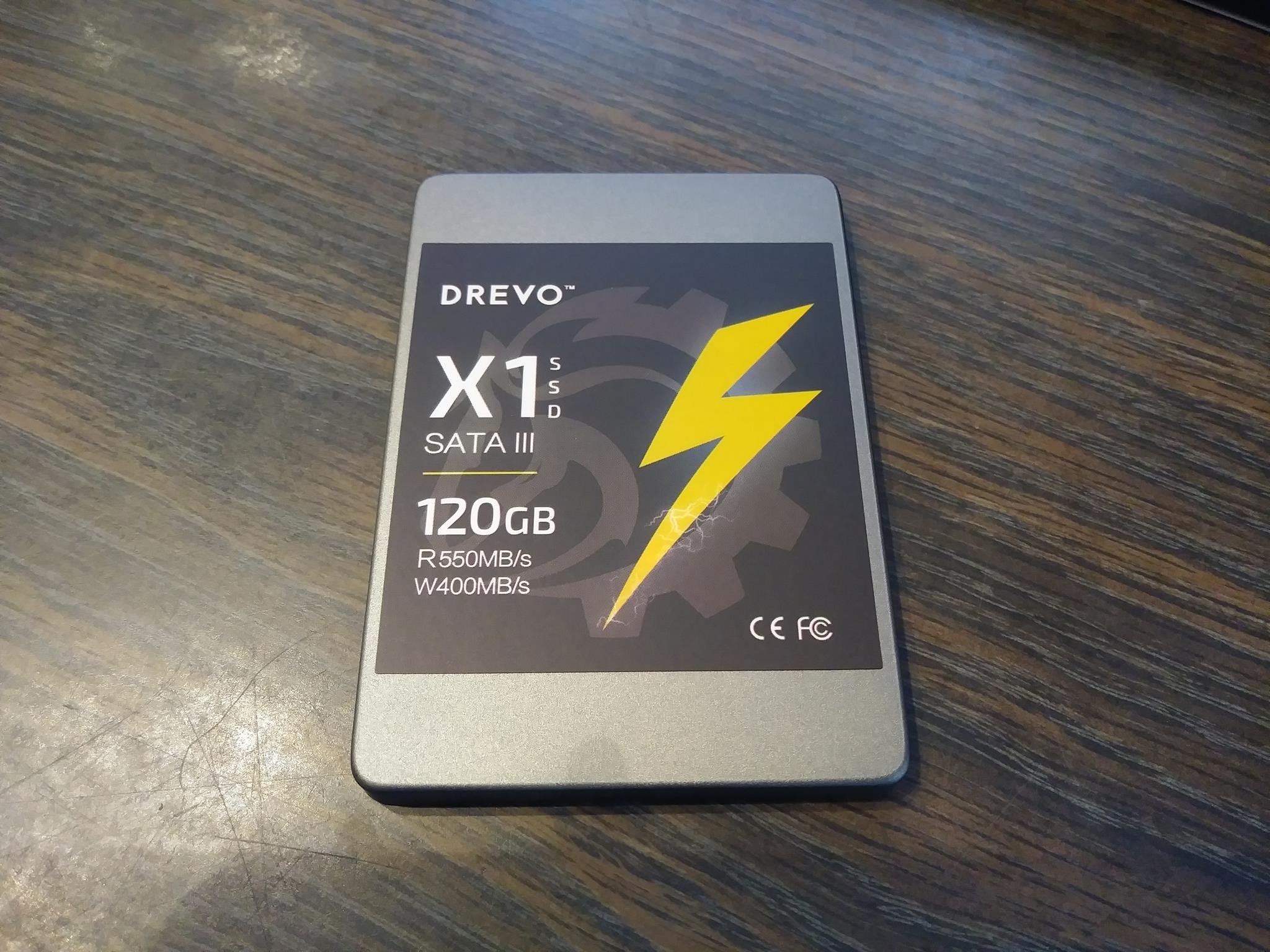
Sabrent Rocket 4 Plus-G 2TB NVMe SSD + Rocket NVMe Heatsink Review
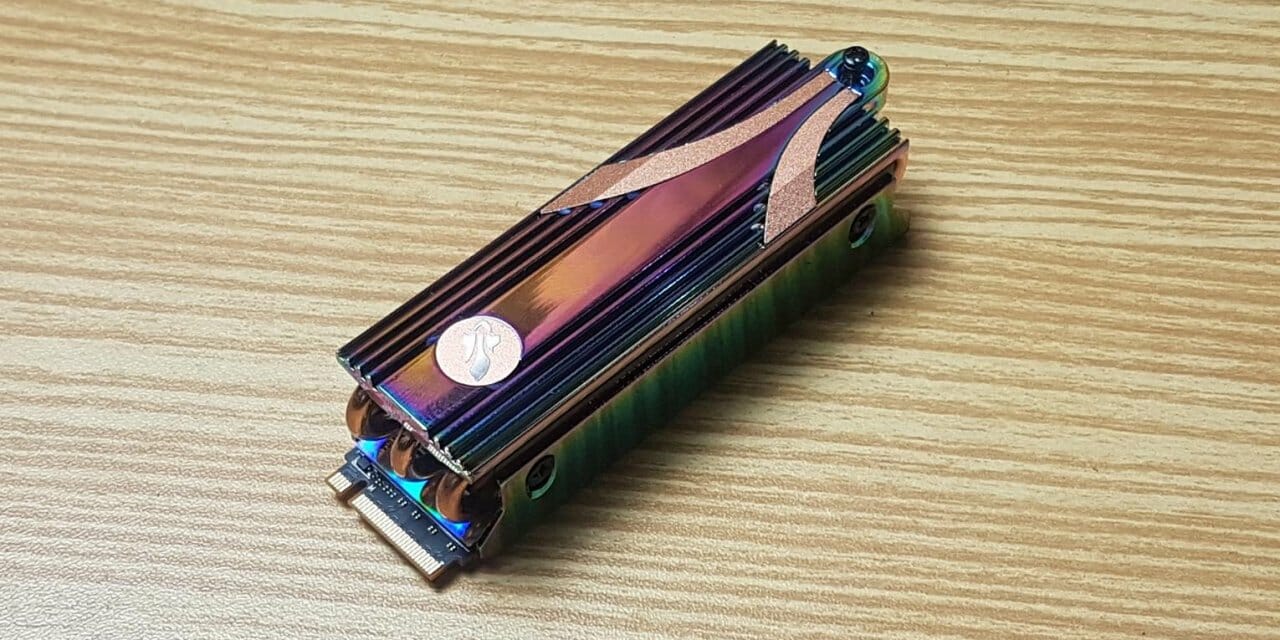
Introduction
Welcome to the futuristic world where the graphics card will communicate with the fast storage solution directly and would perform decompressions as well. While this was a fantasy for some time, Microsoft is bringing it to fruition and calling it DirectStorage API. This is an exclusive Windows 11 feature built on DX12 (DirectX 12 Ultimate). While we are not diving into this technology since it is not the subject of this content, this concept eliminates the CPU overhead considerably. Traditionally, the massive data of textures, audio, game models, characters details, etc are requested by the graphics card. This data is fetched from the storage drive and brought into system RAM from where it is passed on to the CPU for necessary decompression and then it goes back to the system RAM and finally to the graphics card. During this time, graphics card could be doing nothing or post-processing the previous data. This makes the CPU work more and may slow down the overall system processing. With DirectStorage, this request is sent directly to the storage, from which the data is pumped directly into the graphics card’s VRAM via system memory virtually eliminating the CPU from this equation. Storage APIs are not optimized for this kind of work. This is where the DirectStorage API would kick in and allows for multiple processing requests to happen at once.
For this API to work, you would need Windows 11 22H2, DirectX 12 compatible graphics card, and a compatible NVMe SSD. While Windows 11 and graphics cards are an easy part, the compatible NVMe SSD is a hard part. Plus there is hardly a supported game to take full advantage of this feature but reportedly many games are in development to utilize this feature. Using a compatible NVMe SSD, the game will be loaded much faster and the gaming process will be more optimized however, this would not necessarily give you more FPS.
Anyhow, coming back to the main topic, Sabrent collaborated with Phison and brought the next generation or iteration of their popular Rocket 4 Plus series NVMe SSDs, called Rocket 4 Plus-G. Here G would mean Gaming or Advanced Gaming. There are many distinct differences between the G and non-G variants. To make this SSD, DirectStorage compatible, Sabrent is using O₂ GO firmware. This firmware is key to utilizing the DirectStorage API. This firmware allows the G series SSDs to sustain a high level of performance throughout long gaming sessions while maintaining the drive’s health in the background. This drive is using more powerful B47R NAND Flash rated for 1600 MT/s compared to the 12 MT/s NAND Flash in the Non-G series.
Today, we are taking a drive with Sabrent Rocket 4 Plus-G 2TB NVMe SSD. This is still a PCIe gen4x4 storage solution. Don’t let the word G confuse you to take this SSD as fifth generation storage solution. Sabrent has mentioned this drive to reach up to whopping 7300 MB/s sequential reads and up to 6900 MB/s sequential writes when connected to the PCIe Gen 4×4 enabled M.2 port. It is backward compatible with the PCIe Gen 3 but with reduced speeds which is obvious.
Product: Sabrent Rocket 4 Plus-G 2TB [SB-RKTG-2TB]
Price: $179.99 [At the time of the review]
Specifications
Packaging and Unboxing
The drive is shipped inside a paperboard-based packing box.
This drive is using 3D TLC NAND Flash chips and has a 2TB capacity. “Advanced Gaming” tag is highlighted. The Rocket 4 Plus series SSDs have “Advanced Performance” tag written.
The part number or model is SB-RKTG-2TB.
There is a hard closure inside the main packing box. This enclosure has a blue and purple sheen. These colors would shine differently depending on the light source.
Sabrent is using the same presentation that we saw on non-G series SSDs.
Sabrent Rocket 4 Plus-G 2TB NVMe SSD Closer Look
“The new Rocket 4 Plus-G is ready for take-off: our state-of-the-art O₂ GO firmware helps launch the fastest storage – on or off the planet – to unprecedented heights. Never let your personal gaming adventure be cut short or hampered by glitchy playback. This is one SSD that can keep up with whatever you throw at it. Endurance is the name of the game and it will never let you down.”
The above statement is from Sabrent about the new G series Rocket 4 Plus SSDs. We mentioned Rocket 4 Plus and Rocket Q series SSDs that both are using different NAND Flash. While the Rocket Q reaps the benefits of the QLC enabling the series to reach speeds up to 8TB and aims at budget users at best, the Rocket 4 Plus is aimed at the enthusiasts and professionals who would want nothing but the best. This series is using 3D TLC NAND Flash. The maximum capacity available in this series is 4TB. Obviously, cost considerations are there. TLC stores 3 bits per cell as compared to the other NAND flash.
The Sabrent Rocket 4 Plus-G NVMe PCIe 4×4 2TB SSD has an M.2 form factor of 2280. It is an M Key type SSD compatible with the majority of the M.2 slots on modern motherboards. It is also backward compatible with the PCIe Gen 3 but with reduced speeds. This series has following capacities:
- 1TB
- 2TB
- 4TB
There is no 500GB version which makes sense as the cost of that particular mode alone would not make it an appealing and cost-effective solution. I am not sure if Sabrent is planning to release an 8TB version down the road.
One thing that the R4P-G series has is almost an RGB sort of color sheen on the top cover. Under one light effect, it may look like a purple and silver sheen but under another light, it is a different color combination. Anyhow, this is purely aesthetic and has nothing to do with the performance.
The above picture shows blue and yellow colors combination. This would depend on the light source. Anyhow, coming back to the main topic, the G series R4P SSDs also come with a thin layer of copper on the top to transfer heat from the components. However, this particular model runs hot and you would need a heatsink to tame the temperature. There is a Sabrent branding over here. This is a 2TB model developed by Sabrent in the USA. The Sabrent Rocket 4 Plus series SSDs don’t need a dedicated driver on Microsoft Windows 8.1 and 10. Since these SSDs are using the operating system’s native NVMe driver, there is no dedicated software either by the manufacturer. The dimension of this SSD seems to be similar to Rocket 4 Plus 2TB since both SSDs are dual-sided.
There is a black color large size sticker on the back. It has a part number and a serial number of the drive printed. There is no power rating printed over here unlike the Rocket 4 Plus 2TB that we tested earlier. Sabrent has not mentioned any details or specifications about the Rocket 4 Plus-G models on their website. Since these SSDs are almost similar to the latest revision of Rocket 4 Plus models, we expect almost similar specifications for the G series. These have a shock resistance of 1500G. The MTBF is mentioned to be 1,600,000 hours. The SSD comes with a 2-year warranty which can be made for 5 years but only with the registration. The TBW (Terabytes Written) value is mentioned to be 1400 TB meaning we roughly get a guaranteed 280 TB per year in 5 years warranty. Not bad at all.
Coming to the magic of numbers which the users would love to know, this SSD is rated to do up to 7300 MB/s sequential read speed and up to 6900 MB/s sequential write speed when connected to PCIe Gen 4 enabled port. Coming to 4K stats, there is no specification provided by the manufacturer but we would expect these SSDs to have at least the same level of specification as is on the latest version of Rocket 4 Plus 2TB SSDs which are up to 1,000,000 IOPS in Random 4K Read and up to 1,000,000 IOPS Random 4K Writes. These numbers are provided based on a Queue Depth of 32. These are quite good numbers in this class.
The Rocket 4 Plus-G NVMe PCIe 2TB is a dual-sided SSD meaning the components are on both sides of the PCB. When we say components, we mean the controller, DRAM, NAND Flash and the circuitry.
Speaking of features, this SSD is expected to have (based on Rocket 4 Plus 2TB NVMe SSD):
- NVMe M.2 PCIe Gen4 x4 Interface.
- PCIe 4.0 Compliant / NVMe 1.3 Compliant.
- Power Management Support for APST / ASPM / L1.2.
- Supports SMART and TRIM commands.
- Supports ONFi 2.3, ONFi 3.0, ONFi 3.2, and ONFi 4.0 interface.
- Advanced Wear Leveling, Bad Block Management, Error Correction Code, and Over-Provision.
- Upgradeable Firmware.
What’s under the hood?
Since this is a dual-sided SSD, we have components on both sides of the PCB. The top or front side has 7 main components including the controller, DRAM Cache, PMIC, and 4 NAND Flash. There are 4 components on the backside including 1x DRAM chip and 4 NAND Flash chips. The major difference between the Rocket 4 Plus and Rocket 4 Plus-G is that the latter is using B47R flash chips that are rated at 166 MT/s compared to 1200 MT/s on the first version of the Rocket 4 Plus SSDs. The size of each NAND Flash is 250GB and there are a total of 8 these chips on this SSD. Having faster flash chips would mean overall better performance particularly the sustained read/write operations though write operations are cache-bound like many other SSDs. Micron is the manufacturer of these NAND Flash chips. These chips contain 176 layers of data or simply putting these are 176-layer TLCs. The B47R has 4 dies having a size or more appropriately density of 64GB approximately.
These Micro B47R chips are driven by a powerful Phison E18-41 controller (PS5018-E8-41). This is a multicore design that has been customized for the G series of SSDs. This controller is based on TSMC 12nm process technology using a 32bit ARM Cortex R5 micro-controller in Triple-CPU architecture with up to 8 channel support. The controller has support for Dynamic SLC Cache and supports 1600MT per channel in DDR4 DRAM. Speaking of the DRAM or cache, the Rocket 4 Plus-G 2TB NVMe SSD has two chips each having a size of 1GB. SK Hynix is the manufacturer of these two chips and these are DDR4 type rated at 3200MT/s with latencies of 22-22-22.
Control Panel
Sabrent provides a free copy of Acronis True Image software with the purchase of their SSDs. There is a utility called Control Panel which can be downloaded from their downloads section.
This is a simple-to-use utility with some key readouts. It shows the temperature of the selected drive. There are shortcuts to the Microsoft Windows commands like Device Manager, and Disk Management for example.
A quick check on firmware update, we found that our sample has up-to-date firmware out of the box.
Sabrent is also offering a dedicated heatsink for Rocket 4 Plus-G SSDs that has a similar design as we saw on the Rocket NVMe Heatsink earlier. It is shipped inside a cardboard box made packing box. It is a high-performance aluminum and copper heatsink.
Sabrent has provided a user guide in the box.
There are 4x screws and a screwdriver as well.
The heatsink comprises 3 main components:
- 1x Heatsink main body
- 1x base container for dual-sided SSDS
- 1x base container for single-sided SSDs
Even the heatsink itself is finished in the same color sheen as we are seeing over the Rocker 4 Plus-G SSD. There is Sabrent branding over top. One side of the heatsink has a screw handle. The top cover is layered to provide surface area for heat transfer.
Oh, boi! Even the backside has the same sheen finish.
There are three copper heat pipes connecting both parts of the heatsink for effective heat transfer.
The above picture shows the side of the main body. There are cutouts to which the base container is attached using screws. Take note of the top cover’s thickness.
The above picture shows a base container with a white color thermal pad over it.
The above picture shows an assembly heatsink with Rocket 4 Plus-G 2TB SSD ready for some action.
Testing
The below mentioned test build is used:
- Intel i7 13700k [Stock, Auto]
- GIGABYTE Z790 AORUS ELITE AX
- Kingston Fury Renegade DDR5 32GB @ 6400MT/s CAS 32
- GIGABYTE GeForce RTX 3060 VISION OC
- Sabrent Rocket 4 Plus 2TB NVMe SSD [OS Drive]
- be quiet! Straight Power 11 1000W Platinum PSU
- Thermaltake Core P6 TG Snow Edition converted in an open-frame layout
We have used the following software:
- AS SSD 1.8.5636.37293
- ATTO Disk Benchmark 4.0
- CrystalDiskMark 6
- Anvil Pro Storage Utilities 1.1.0
- DiskBench
- 3DMARK Storage Benchmark
- PCMARK10 Storage Benchmark
- 1 Benchmark
- Game Load Benchmark
Microsoft Windows 11 22H2 is used for the testing.
The above is a snapshot from CrystalDiskInfo. There is nothing different except the firmware on this SSD compared to a Rocket 4 Plus 2TB SSD but don’t let it deceive your eyes.
Test Results
We saw over 7000 MB/s in sequential read operations (falling short of 7300 MB/s mark) and 6965 MB/s in sequential write operations validating the 6900 MB/s mark. This is a superb performance from this drive. The Random 4K performance is also nice particularly the Q1T1 write performance is superb.
The above picture shows a run from CrystalDiskMark showing the IOPS performance of this drive. This is a nice performance overall.
The Random 4K Q1T1 timings are fine.
Next, we run the AS SSD software to test the performance of the drive. Please, note that each stress testing software works differently and there would be variations between software and between two runs even on the same SSD. We have an overall score of 13289 from this test run which is an impressive score.
The above is a result of the AS-SSD Copy benchmark. It shows the speed and duration of different workloads giving an idea of the real-world use scenario. This drive is quite good for almost every category.
The above pictures show the result of the Compression benchmark run from AS-SSD. Ideally, we would not want dips across the length of the line for both read and write operations. We are seeing a good result from the read operation but we observed two dips on the write operations depending on seeding. Maximum obtained speeds were 6000 MB/s in both scenarios.
Next, we ran the ATTO Disk Benchmark to test the drive’s performance. We have a maximum read (sequential) speed of 6.63 GB/s which is quite impressive. This is exactly the same result we saw on the Rocket 4 Plus 2TB SSD. The average is above 6.34 GB/s as well on the writes.
Next, we ran the Anvil Storage Utilities benchmark to test the performance of the drive. On the default test size of 1GB, the tested read speed score was 9642.39. The write speed score was 17705.84 with an overall score of 27348.23.
Next we ran the IO – Threaded QD Benchmark in the Anvil. Here are the results.
We have a speed of 1228162.9 with QD32 in the write operations crossing way over 1,000,000 mark.
We got 1267800 speed with a QD64 in the write operations. Impressive performance.
Next, we ran IO – Threaded operations for the read speed using different queue depths. Here are the results
We have 483625.9 IOPS. The reads could have been bettered but this is a bit better performance over the Rocket 4 Plus 2TB SSD.
When the queue depth was raised to 64, the speed was 652006.1 IOPS which is quite good as the result reaches close to the rated 650k IOPS mark.
With a queue depth of 128, the read speed was 797686.4 IOPS. This drive could not reach the 1,000,000 IOPS mark.
3DMark Storage Test
3DMark Storage test is relatively a new test bench measuring the gaming-only performance of the given drive using three games. It measures the load time of the games, recording the gameplay, saving the game, and moving the game. The overall score is given in the bandwidth and access time.
The Sabrent Rocket 4 Plus 2TB SSD did an average of 532.34 MB/s and 59µs. The score is 3075. This is on the lower side. To be honest, I was expecting a result near the 4000 mark.
PCMARK10
We ran two tests from Storage benchmarks in this suite. These are Data Drive Benchmark and Quick System Drive Benchmark.
This SSD has performed quite well in Data Drive Benchmark with an overall score of 5456.
This SSD scored 4052 marks on this test.
Blackmagic Disk Benchmark
Black Magic disk benchmark is an important tool that would give you a fair idea of what the drive in question is capable of. This information is crucial for the streamers and rendering operations. We have three video compression coders listed along with various formats. This drive almost supports all of these formats. This is not all as this tool also gives an approximation of what speeds to expect for each format in read and write operations. This drive has a good performance overall.
DirectStorage Benchmark
We have yet to try Forsaken which is the first PC Game to have DirectStorage support. For now, we are showing the famous benchmark showing the GPU decompression and load time of data.
Real World Testing
We have used DiskBench in multiple scenarios to check the real-world data transfer rates. Here are the results:
A compressed file of 97GB containing multiple compressed files and folders of different sizes was copied to the Rocket 4 Plus-G 2TB SSD. The file was then read from the DiskBench. We have a transfer rate of 3243.4 MB/s and it took 29 seconds to complete this operation.
Next, we copied the same compressed file from one folder to another on the same drive. The transfer rate was 3405 MB/s and it took 28 seconds to complete this operation.
Next, we copied a folder of 110GB size containing multiple compressed files, sub-folders, and mixed other files. The transfer rate was 2895.9 MB/s and it took 38 seconds to complete this operation.
The real-world transfer rates are impressive. They are even better than what we saw on Rocket 4 Plus 2TB SSD.
Gaming Load Time
Since these NVMe SSDs are also targeted toward gamers alike. We have also calculated the loading time of the game using the Final Fantasy XIV: Shadowbringers Benchmark using High settings.
It took 6.826 seconds in total loading time which is impressive.
Thermals
Using the Sabrent Rocket NVMe Heatsink, this SSD was doing 62°C which is good at such a high ambient temperature of 33°C.
Conclusion
While the Sabrent Rocket 4 Plus series of Gen NVMe SSDs is a high-performance storage solution particularly the second generation or iteration that is equipped with an even more powerful B47R NAND Flash. Sabrent has taken this iteration to a whole new level by introducing the Rocket 4 Plus-G series of Gen NVMe SSDs. This SSD has a marketing tag of “Advanced Gaming”. This makes sense as probably this is the first SSD on the market to provide full support for Microsoft DirectStorage 1.1 API using customized firmware named Sabrent O₂ GO.
This series SSDs are available in 1TB, 2TB, and 4 TB capacities. These SSDs are using 3D TLC NAND from Micron. These SSDs are reaping the full benefit of PCIe Gen 4 by utilizing 4x lanes. Hence you would need a PCIe Gen 4 enabled motherboard to fully benefit from these SSDs. There is no detailed specification of these drives on Sabrent website. Since these are based on Rocket 4 Plus so we would expect the Rocket 4 Plus-G series SSDs to offer similar or better performance compared to Rocket 4 Plus series SSDs.
The Sabrent Rocket 4 Plus-G is an M key type SSD using a 2280 form factor. The SSD has a sequential read speed rating of up to 73000 MB/s and a sequential write speed of up to 6900 MB/s. These speeds can only be realized when on PCIe gen 4.0. We know that the Rocket 4 Plus 2TB NVMe SSD has 4K random read and write speed ratings of 650K and 700K IOPS respectively using QD32. So, we would expect a similar or better 4K Random operations speed on Rokcet 4 Plus-G 2TB NVMe SSD though the powerful controller of these drives is capable of 1,000,000 IOPS in read and write.
Since this is a dual-sided SSD, we have components on both sides of the PCB. This SSD has a total of 8x 3D NAND 176 layered TLCs with each NAND flash having 4 dies. These are Micron B47R chips. These chips are rated for 1600 MT/s. The main driving force is Phison E18-41 controller (PS5018-E8-41). This is a multicore design that has been customized for the G series of SSDs and supports 1600MT per channel in DDR4 DRAM. It supports dynamic SLC caching. This SSD has two SK Hynix DRAM chips each having a size of 1GB and rated for 3200 MT/s with latencies of 22-22-22. 2GB fast cache for a 2TB size SSD is good enough. Since these SSDs are using cache writing so that is another plus but it could suffer if the total data size exceeds the permissible cache size or capacity.
The TBW rating is 1400. Sabrent is offering a 2-year warranty on this SSD. The user can register the SSD within 90 days of purchasing to get the 5-year warranty. The SSD is PCIe 4.0 compliant with NVMe 1.3 compliance. Power management support for APST/ASPM and L1.2 is provided. It supports the TRIM and SMART commands along with the ONFi 2.3, 3.0, 3.2, and 4.0 interfaces. It features Advanced Wear Leveling, Bad Block Management, Error Correction Code (Thanks to E18) and Over-Provision. The firmware of the SSD can be upgraded using the Control Panel utility. One can download this utility from the website along with a free copy of Acronis.
When it comes to the raw performance, this SSD is all about numbers and it delivers a solid performance particularly the sustained write operations though our sample size was only 110GB but still it would give some idea. In our testing, this drive was operating at 7000 MB/s in sequential reads and 6900 MB/s in sequential writes. The 4K writer performance is impressive however; the drive fell short of reaching the 1,000,000 IOPS in 4K reads. The real world testing is also showing impressive performance and gaming load time is lower as well. This SSD runs warm so you are better off using a heatsink for this SSD. Sabrent has you covered on that end by providing Rocket NVMe Heatsink that can not only tame the temperature of this drive but this heatsink is also in the same colorful layout as is on the SSD.
The Rocket 4 Plus-G 2TB SB-RKT4P-2TB SSD is listed at $309.99 at the time of this review. If you are a power user or a content creator or any professional for that matter whose work involves heavy workloads, the Rocket 4 Plus SSDs are there for your exact requirement with their super-fast storage speeds, features-rich, and 5-year warranty for peace of mind. However, I was expecting this SSD to compete head-to-head against Kingston Fury Renegade 2TB NVMe SSD but there are many synthetic benchmarks where the performance of Kingston SSD is better than the Rocket 4 Plus-G 2TB NVMe SSD.
The Sabrent 4 Plus 2TB SB-RKTG-2TB SSD is a high-performance storage solution that not only provides high data transfer speeds but is also fully supporting the DirectStorage API which could be the game changer in the coming time when it comes to reducing the CPU overhead. this unit has MSRP of USD 179.99 at the time of this writing and it comes recommended by us.
Thanks to Sabrent for the provision of the unit.
















